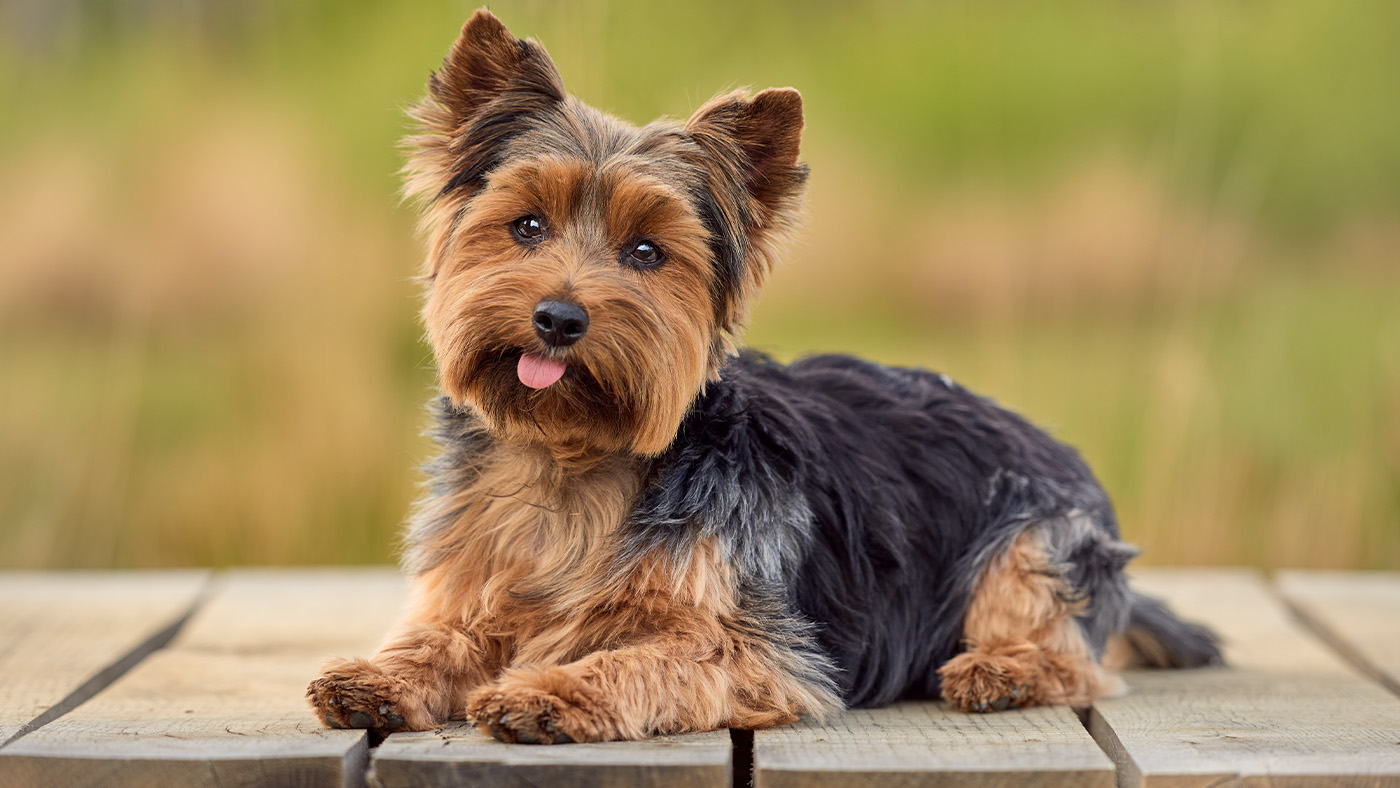32 cat-safe houseplants that will turn your home into a sanctuary
Cat-safe houseplants aren't just safe for your feline friend, they're also wonderful for creating a truly tranquil living space
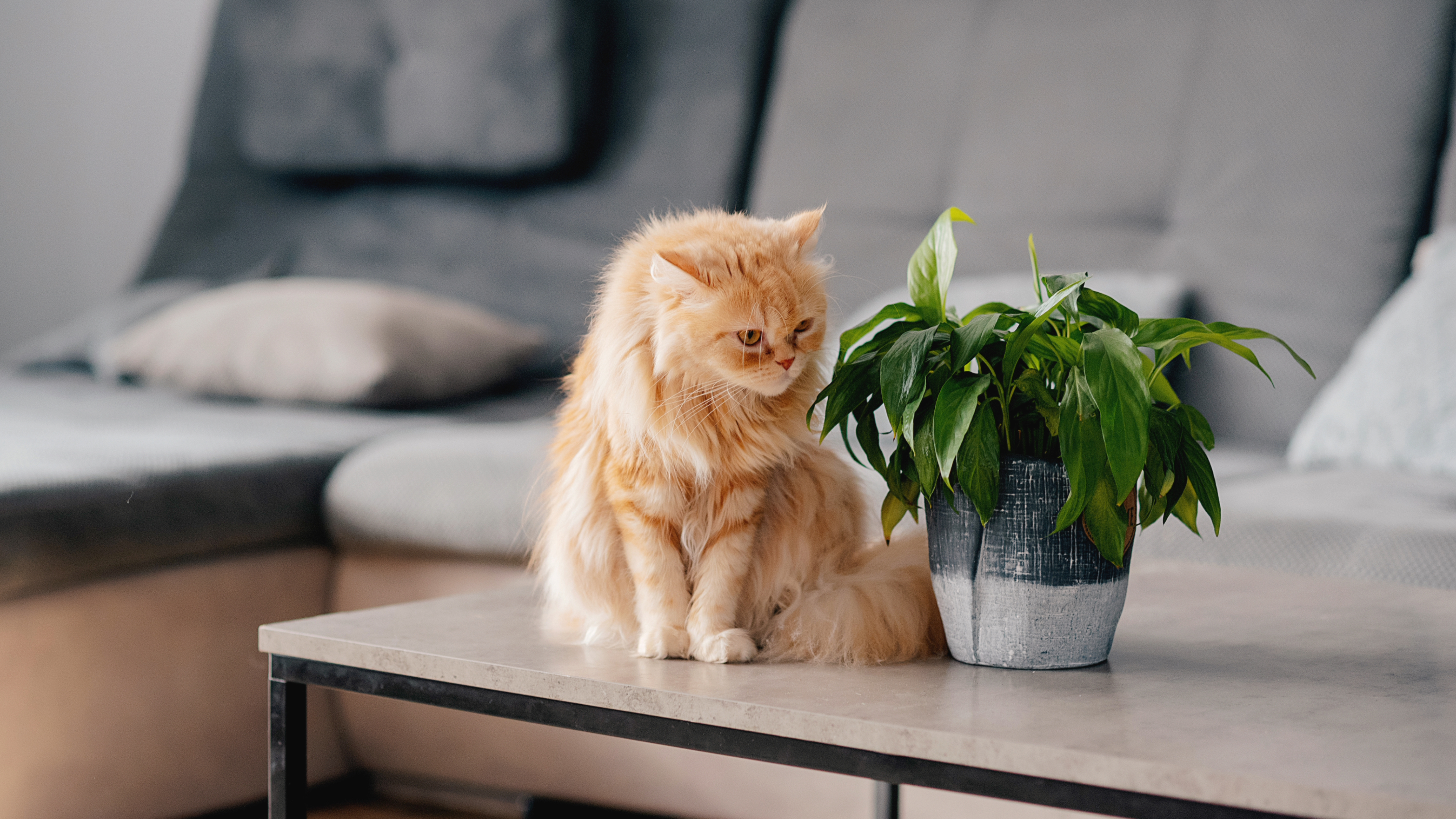
Looking for some beautiful cat-safe houseplants to brighten up your living space? Well, you're in luck because there are plenty of stunning options to choose from.
You may provide your feline friend with the best cat food but there are some things you only know if you're a cat owner – like how irresistible most cats find plants!
Whether your kitty likes to nibble on the leaves or paw at them and bat them about, you can rest assured that all of the plants on this list are non-toxic and completely safe for your beloved bundle of fluff.
So, without further ado, here are our favorite cat-friendly houseplants to bring a touch of nature into your home...
32 cat-safe houseplants
1. Boston Fern
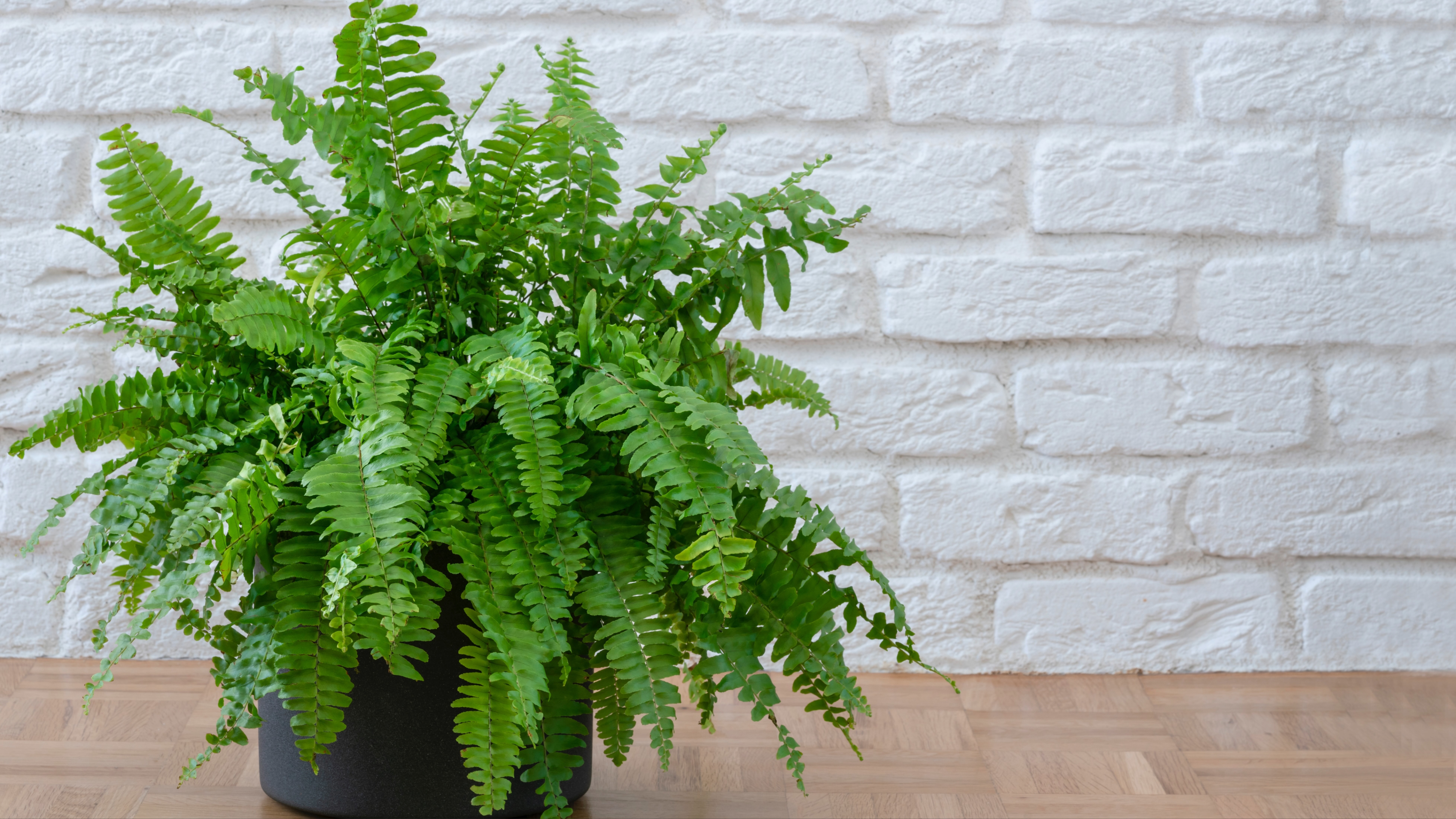
The Boston Fern, also sometimes referred to as the sword fern, is a stunning plant that will look beautiful in any room in your home. A classic houseplant that's easy to care for, it requires little sunlight and will live for years. Boston Ferns typically grow to around four feet in length and roughly six feet wide, and if your cat fancies a nibble, rest assured that consuming it will do them absolutely no harm.
2. Chinese Money Plant
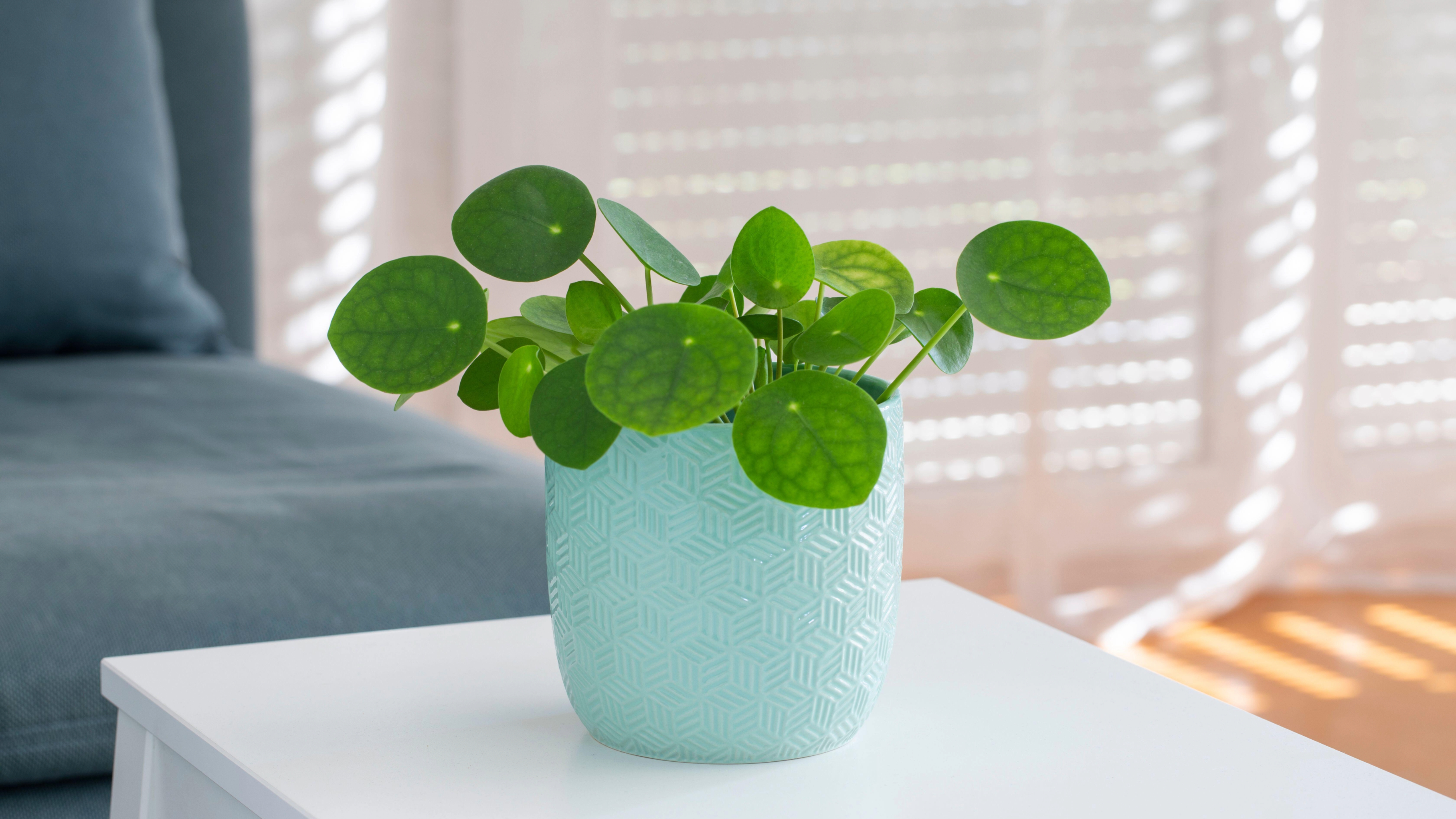
With leaves and stems that are free from hazardous compounds, the Chinese Money Plant is non-toxic to cats. An eye-catching green beauty that's become popular the world over, the Chinese Money Plant is a member of the stinging nettle family but thankfully, it won't actually sting you. Believed to bring good luck to its owner, this pretty and easy-to-care-for plant adores bright, indirect sunlight and likes to be watered once a week.
3. Staghorn fern
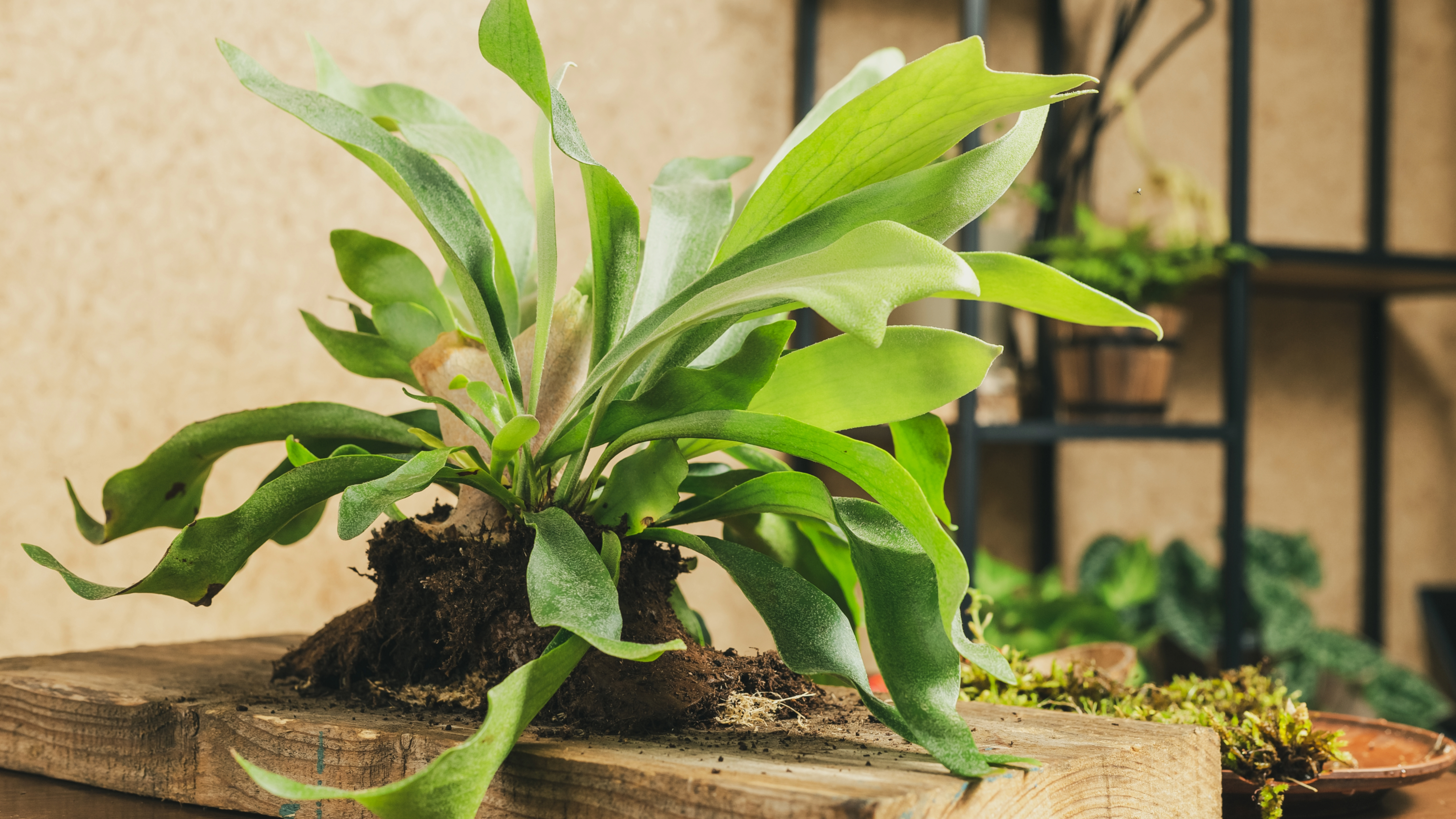
When it comes to funny things cats do, chewing on plants with irresistibly long leaves is definitely on the list. The good news is that if you catch them nibbling on your prized staghorn fern, you won't have to worry because they're completely non-toxic. A hardy plant that suits gardeners of all skill levels, the staghorn fern got its name because its leaves resemble deer antlers. It does best in humid conditions with bright, indirect, or dappled sunlight.
PetsRadar Newsletter
Get the best advice, tips and top tech for your beloved Pets
4. African Violet
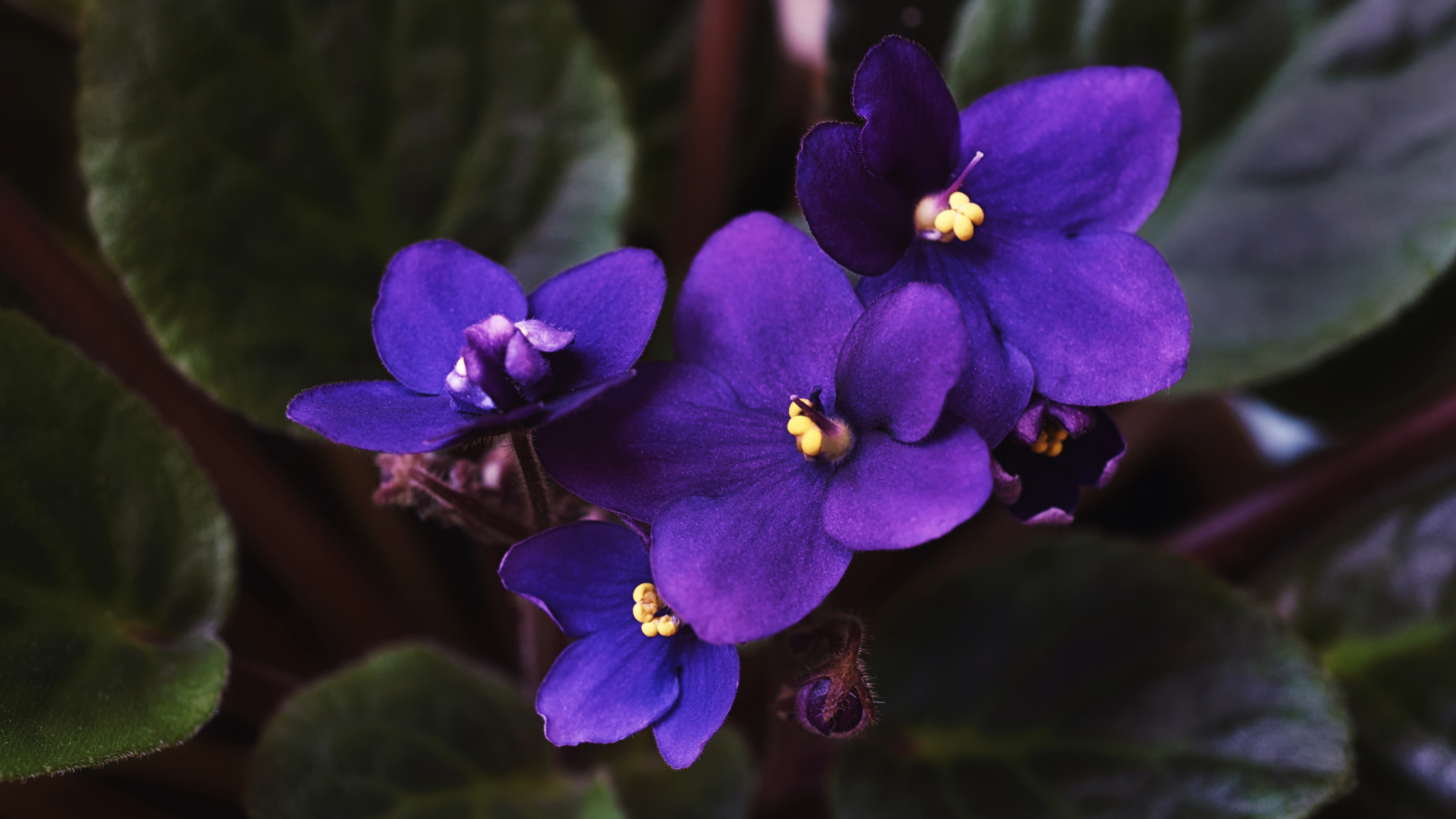
One of those sweet-looking plants that adds a pop of cheerfulness to any room it's placed in, the African Violet is cat-friendly and with the proper care, it will flower almost all year round. One of the world's most popular houseplants, the African Violets like bright, warm, and humid conditions as moist environments prevent them from drying out.
5. Parlor palm
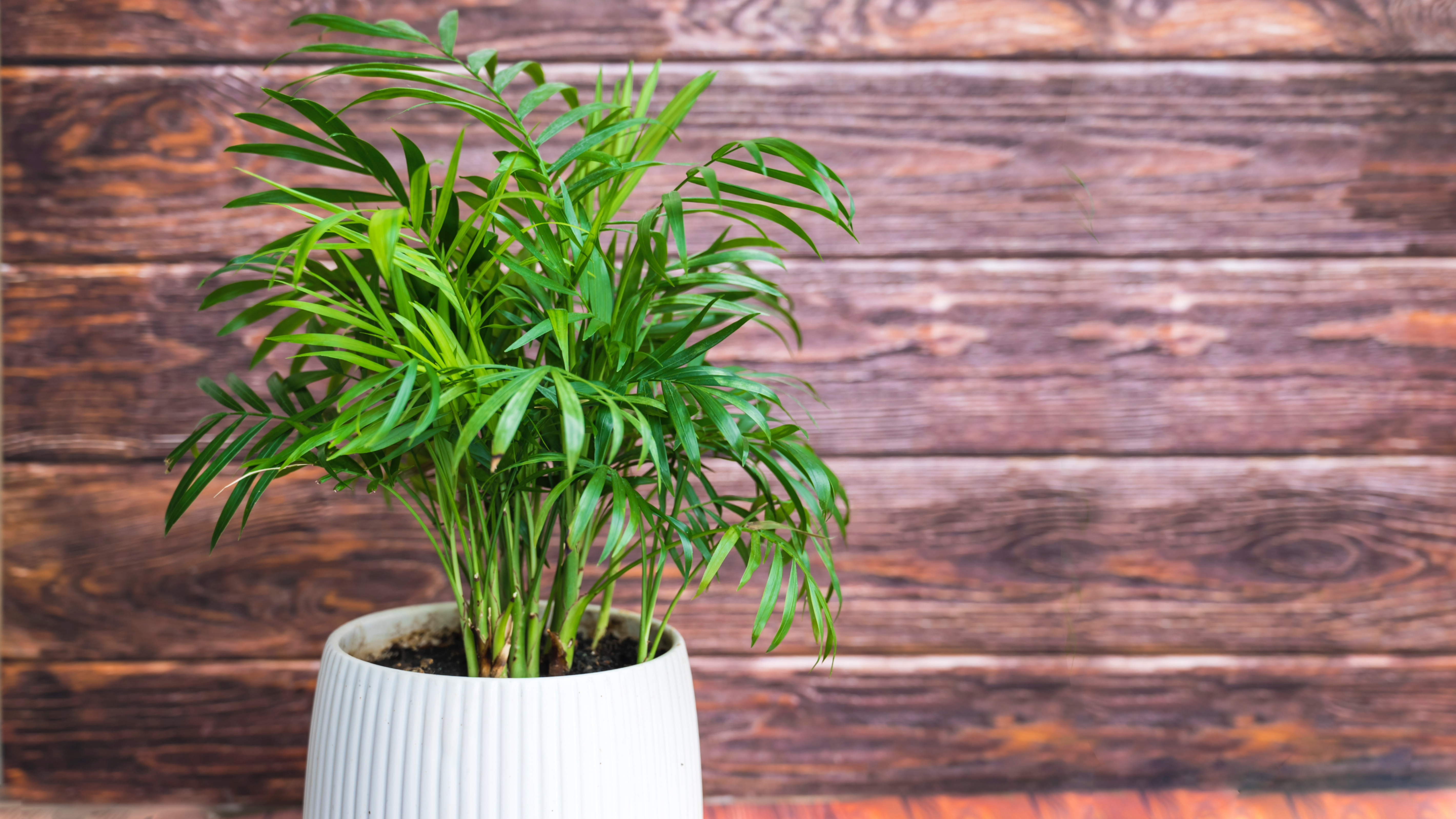
A tall and elegant plant that thrives in bright, indirect sunlight, the parlor palm is a great choice for beginners. Brilliant for purifying the air, parlor palms will grow to around six feet tall with a two to three feet spread. Non-toxic, their palm fronds grow upwards and are very resilient — even when being batted about and used as an interactive cat toy by your mischievous feline friend!
6. Purple waffle plant
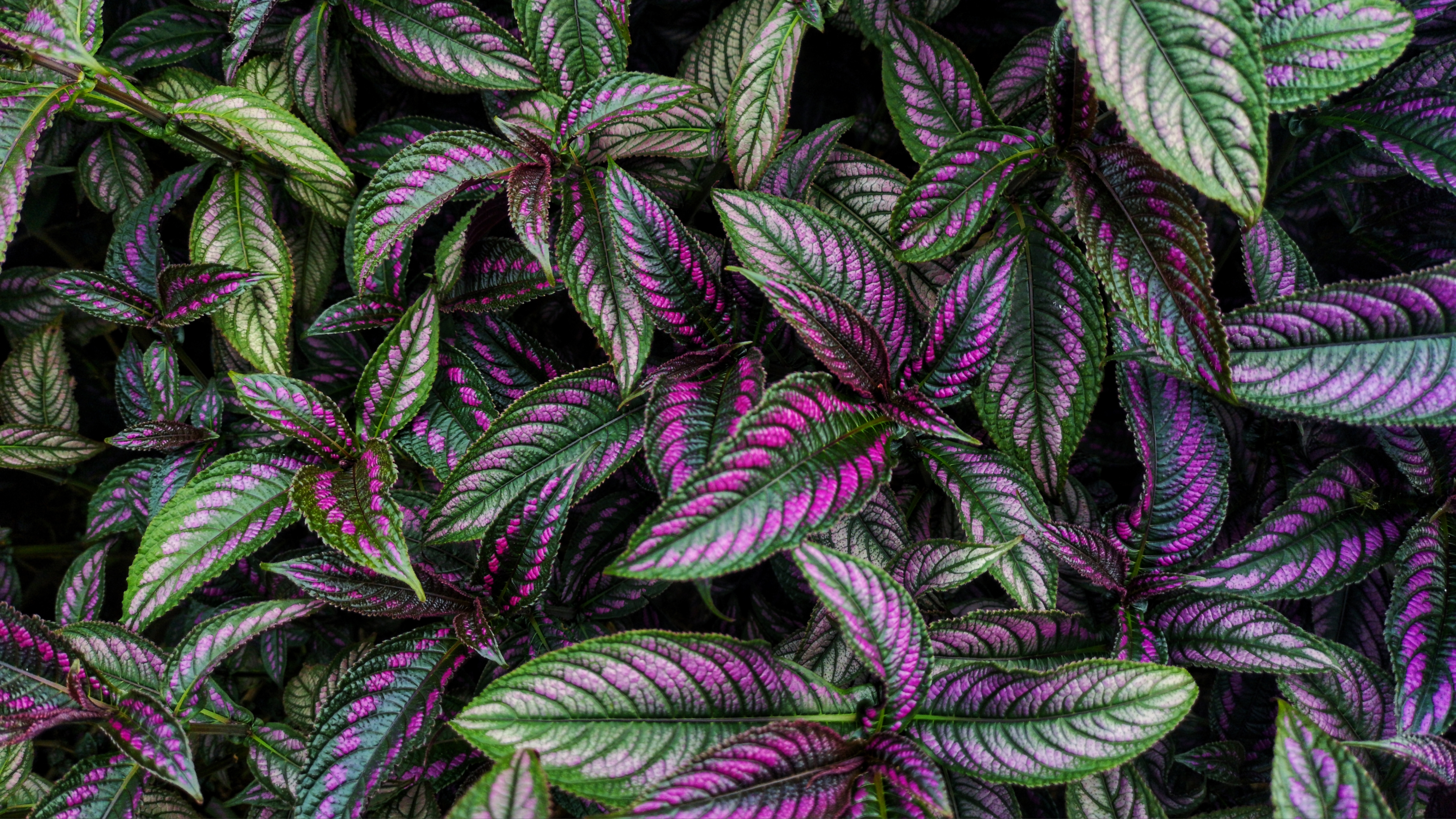
When it comes to how to stop a cat from eating plants, placing them out of reach is your best bet. Thankfully, the purple waffle plant is small and compact which makes keeping it high up easy to do. Easy to grow and very low maintenance, this plant enjoys bright, indirect light, frequent watering, and regular misting.
7. Bromeliad
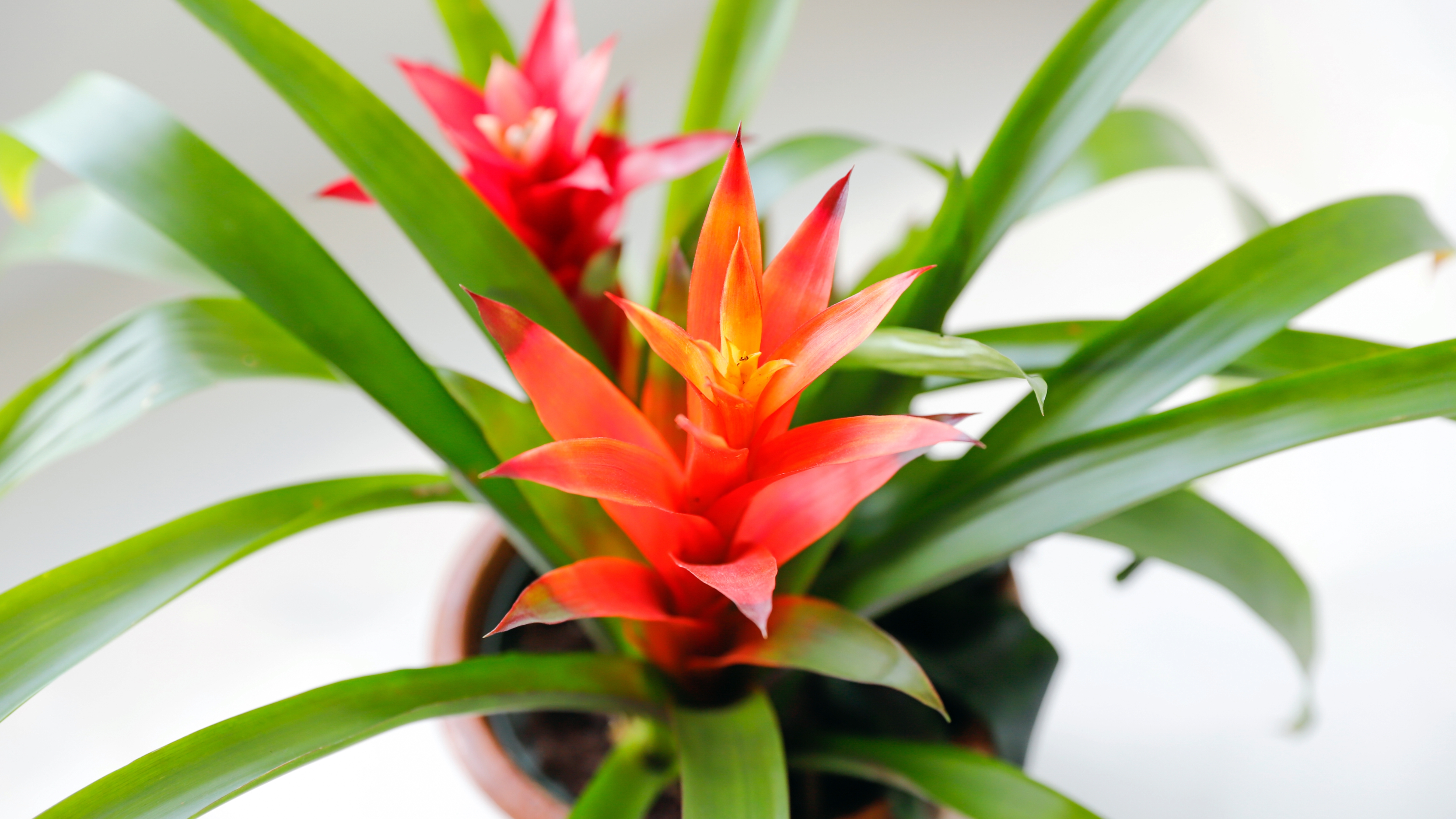
If you're looking for a unique and eye-catching plant that will add a pop of color to any room in your home, the bromeliad is well worth considering. Because they hail from tropical rainforests, this plant thrives in warm spaces and likes fast-draining potting soil that holds moisture. Bromeliads are very sensitive to the chemicals found in tap water, so watering them with collected rainwater is recommended.
8. Orchid
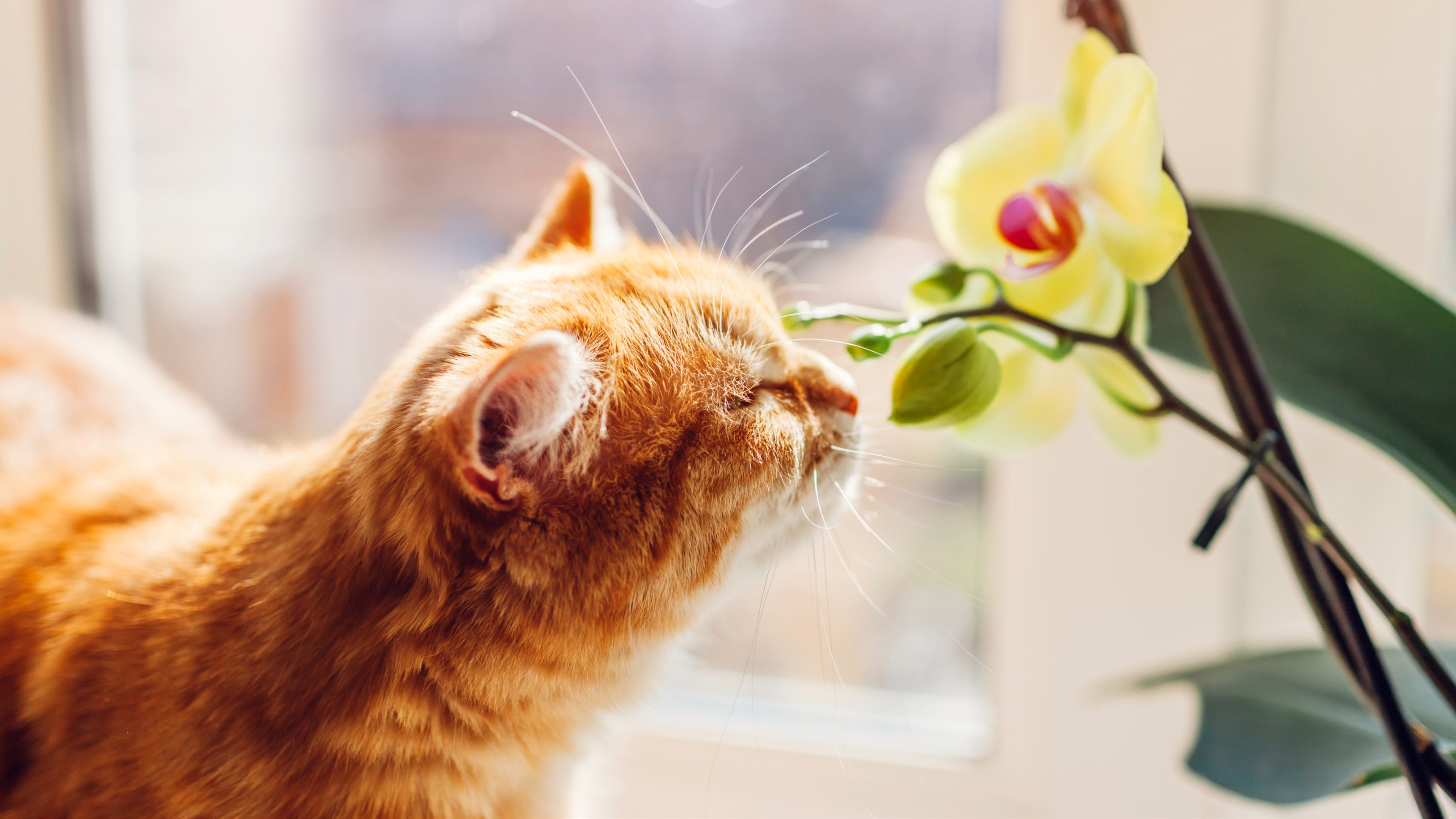
Gorgeous plants with colorful blooms, and orchids are safe plants to have around the home if you have cats. While orchids can occasionally cause vomiting or diarrhea in cats if the leaves or petals are ingested, they're not considered to cause more serious symptoms. There are over 25,000 species of orchid and most will prefer warm, humid climates. Regardless of which type you choose, make sure the root system gets plenty of air and doesn't stay wet.
9. Mosaic plant
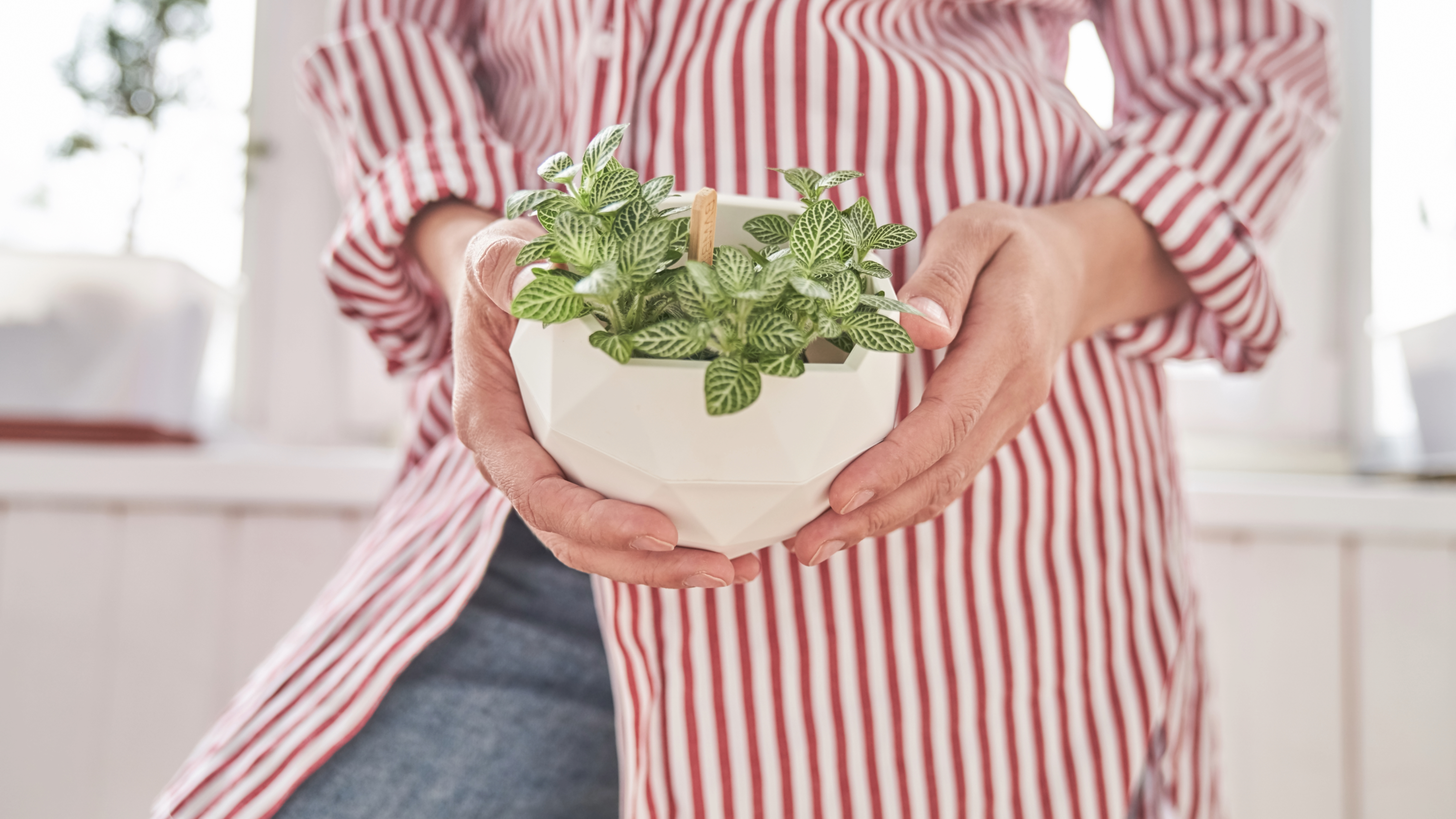
The mosaic plant, also known as fittonia or the nerve plant has strikingly patterned foliage that resembles a mosaic or network of nerves. They come in a variety of different color options including green and white, green and pink, and orange and pink. A lovely showstopper plant that looks equally good on its own or surrounded by other houseplants, it likes humid locations like the bathroom as its natural habitat is the forest floors of South America.
10. Banana plant
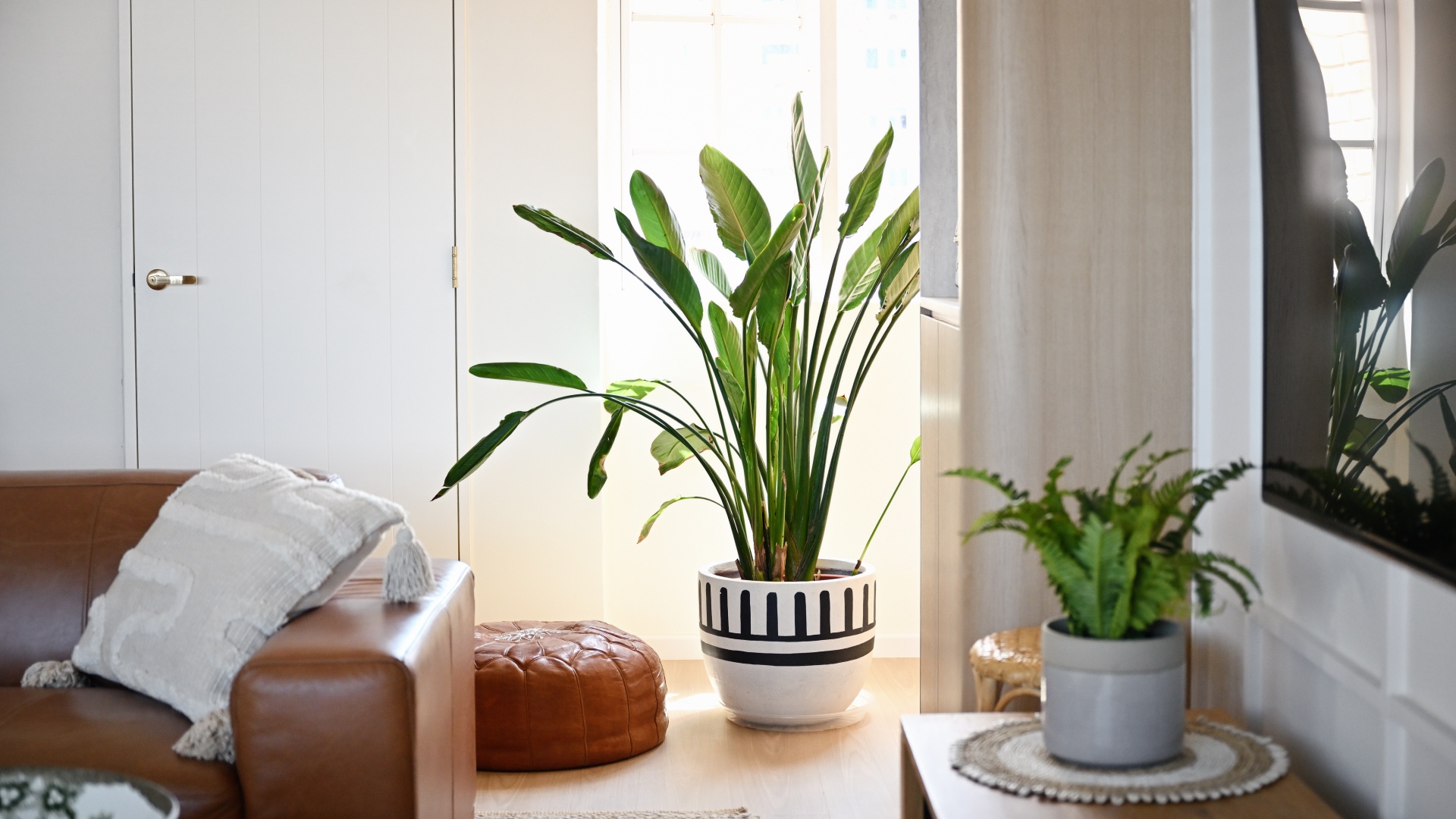
Looking for a dramatic feature for your living room? The banana plant certainly ticks that box. Now, just to avoid any disappointment a few months from now – bananas grow on bushes, not trees, so don't expect this plant to produce any fruit. Still, if you don't mind that, this evergreen perennial will bring you plenty of joy with its stunning tropical foliage. Easy to care for and an excellent air purifier, the banana plant loves bright light and prefers to be kept away from drafts.
11. Prayer plant
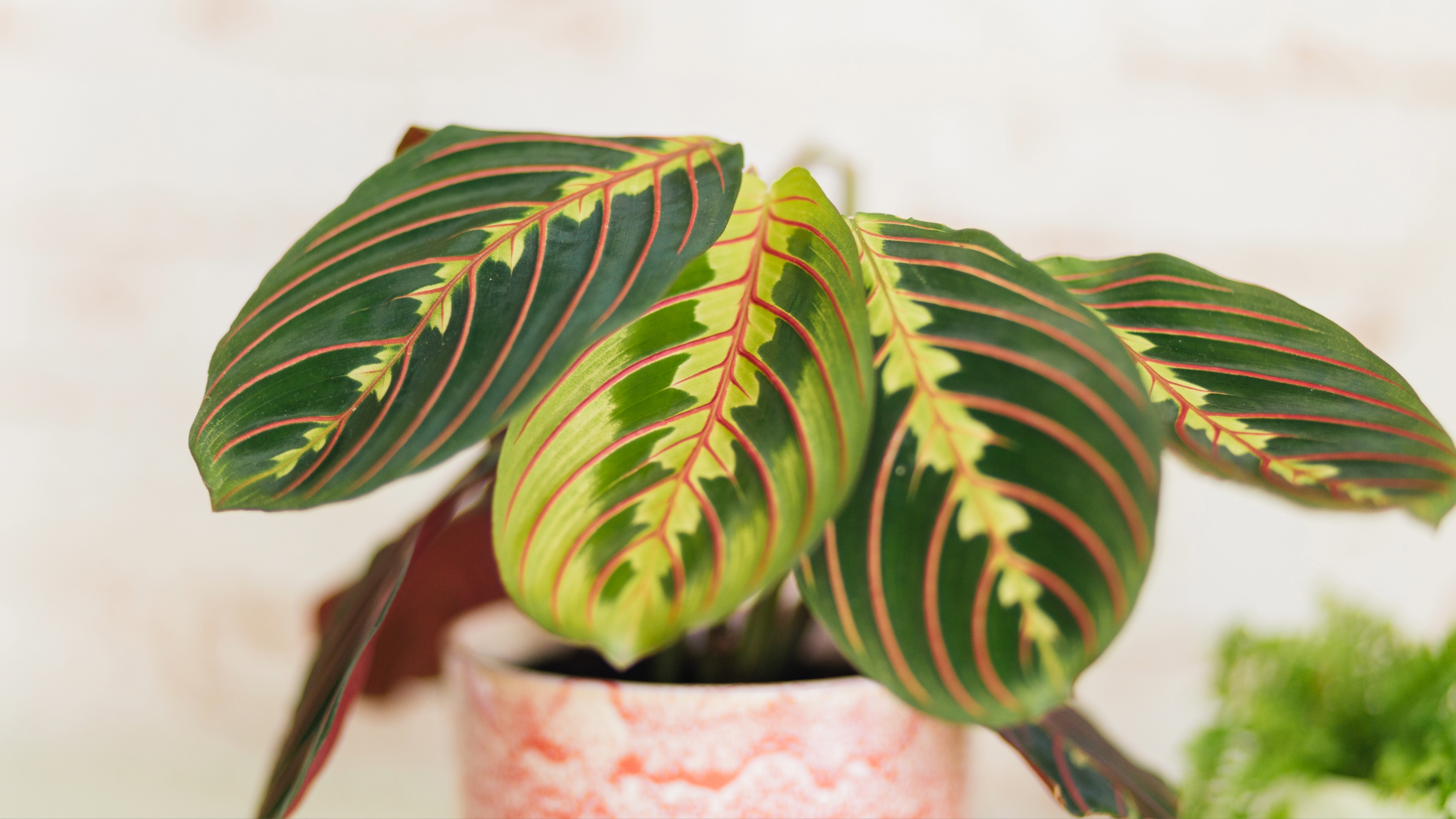
A distinctive plant with green leaves that have red veins and pink undersides, the prayer plant gets its name from its leaves which are flat during the day but fold up like hands in prayer at night. It's slow and low growing and likes tropical conditions with plenty of warm and humid air. It's important to ensure your prayer plant is in nutrient-rich, well-drained soil as it's sensitive to root rot.
12. Haworthia

The haworthia is a pretty succulent native to southern parts of Africa that you may hear being referred to as the zebra cactus thanks to its distinctive white stripes. If you're looking for a low-maintenance house plant, the haworthia is a fantastic choice as it requires little in the way of watering and is very hardy. They do well in warm spaces, so they're an excellent choice for a sunny conservatory or living room.
13. Polka dot plant

If you love polka dots, you're absolutely going to adore the stunning polka dot plant. One of the most striking of all house plants, its bright leaves typically come flecked with pink, but you can also get the polka dot pattern in purple, white, or red. Warm and humid conditions with indirect light will suit this plant perfectly and they remain relatively small even once mature, which makes them ideal for apartments and other compact spaces.
14. Calathea
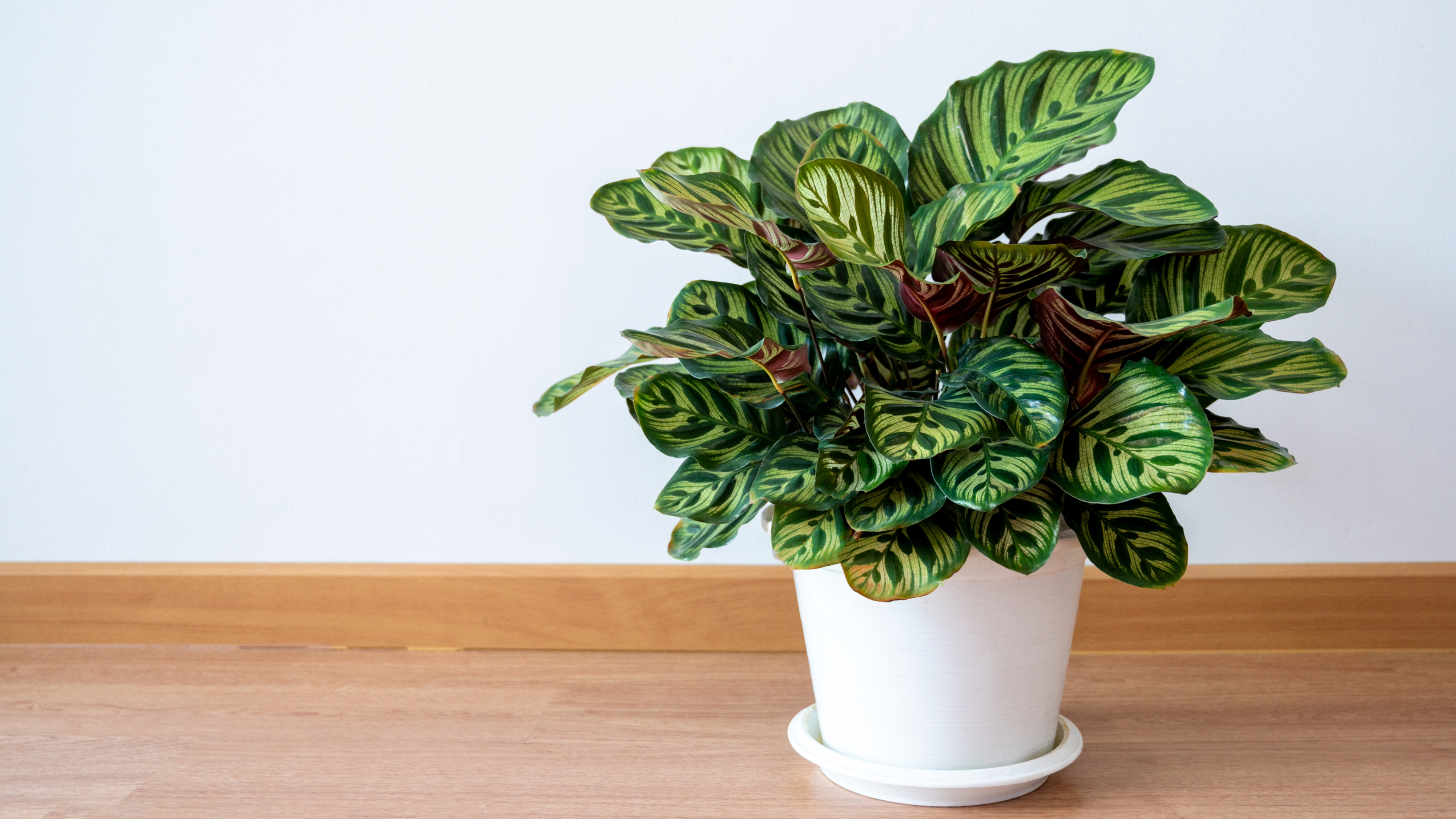
A great, non-toxic choice if you have cats, the calathea are highly decorative foliage plants that have a reputation for being wonderful air purifiers as well. There are a wide range of species available and all of them require a moderate level of care to keep their leaves looking their best. They have superb markings, so if you're looking for an eye-catching house plant that puts on a spectacular display, the calathea is well worth considering.
15. Venus fly trap
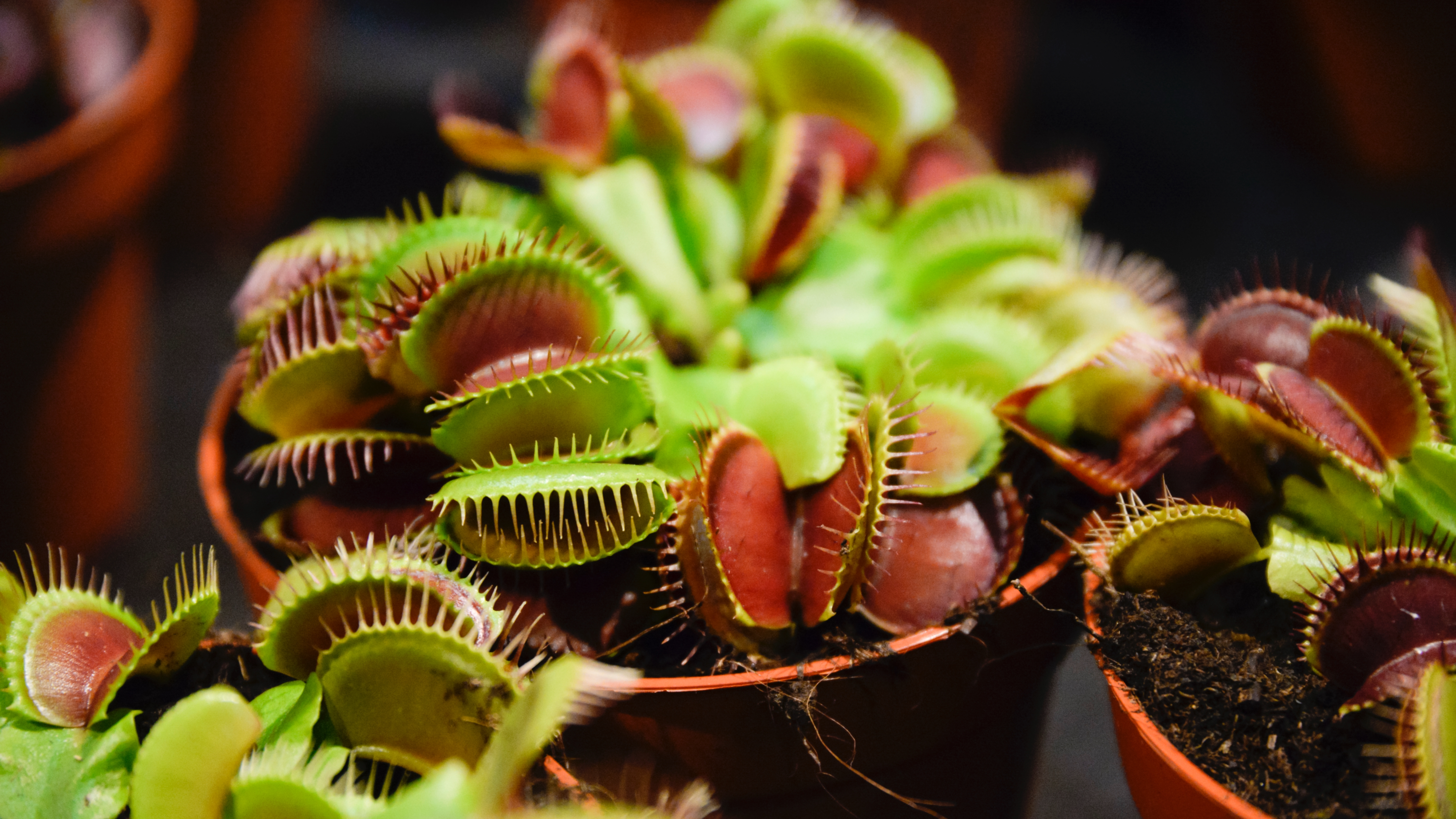
Looking for a fascinating plant that will get people talking? Look no further than the Venus fly trap. One of the world's most unique plants, it has a jaw-like trap made up of two hinged lobes at the end of each leaf which it uses to capture and eat unsuspecting insects. In order for it to thrive, the Venus fly trap has very specific care instructions. Tap water will kill them, so you can only water them with rainwater and fertiliser is also a no-go as anything with nitrogen will also cause them to die. It's also important not to poke them, as this uses up their vital energy supply and causes them to decline.
16. Spider plant
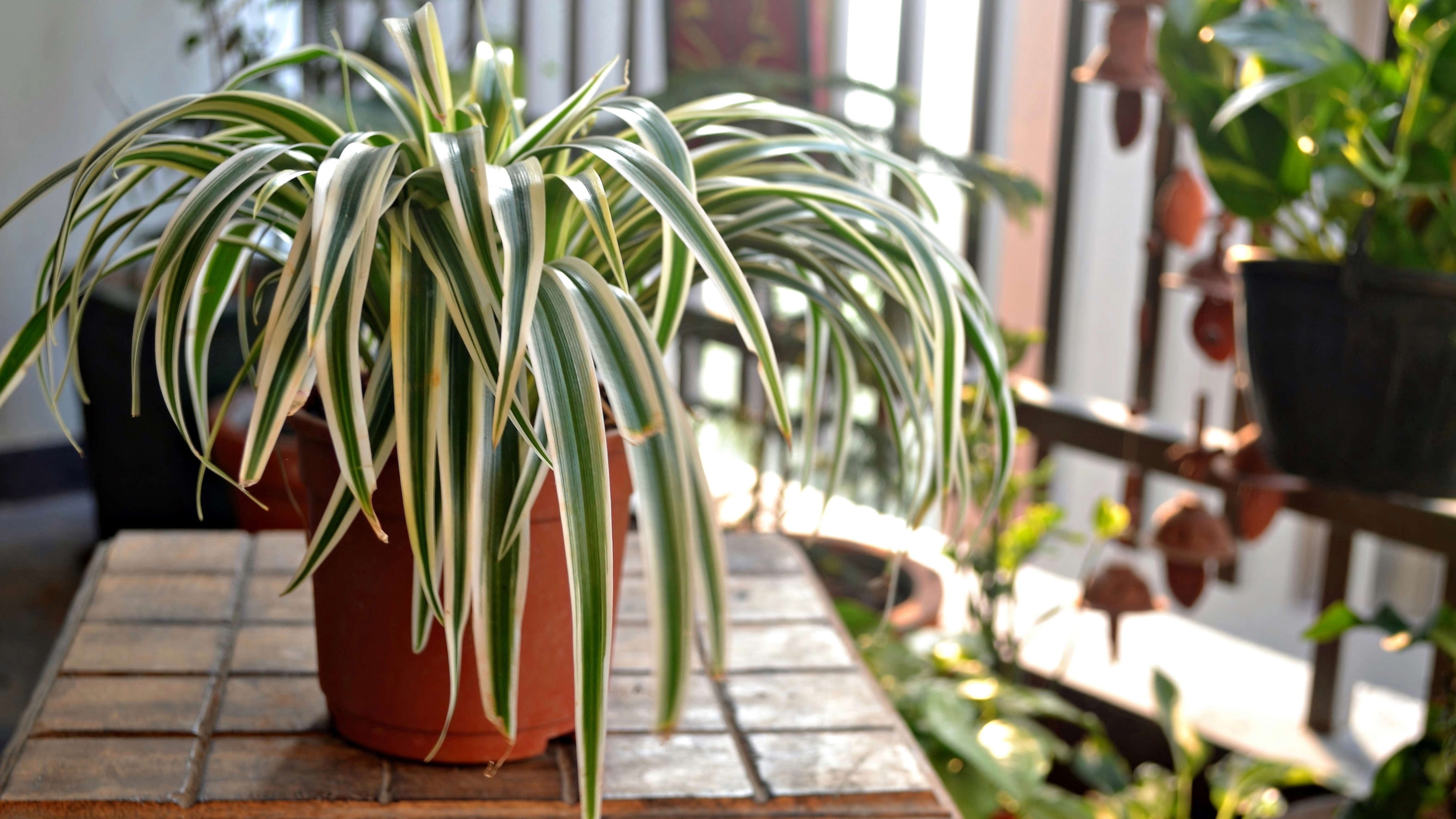
Named because it has long leaves that resemble the legs of a spider, the spider plant has always been a popular choice amongst those looking for an easy-to-grow and low-maintenance house plant. The leaves can grow to around 18 inches in length and mature plants send out stems that contain white flowers. They're a great choice for apartments as spider plants can be grown in hanging baskets, so you don't have to have them taking up space on a table or other surface. They also produce lots of new plants and are easy to propagate, so you can pot the babies and give them away as gifts.
17. Echeveria
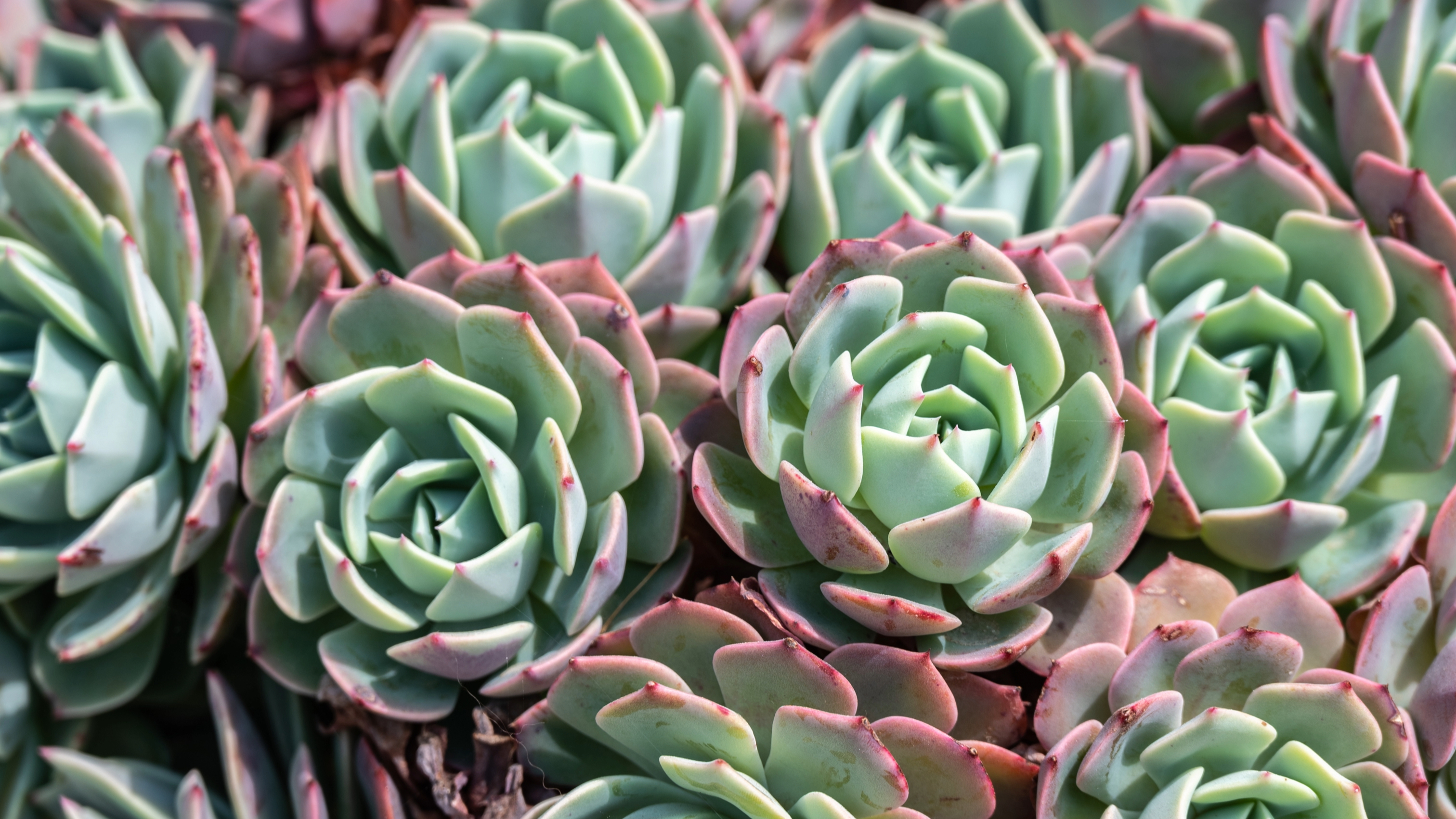
A beautiful rosette-shaped succulent, the echeveria is native to central and southern America and so it does well in hot and sunny spots. If you're one of those people who forget to feed or water plants or just feel they lack the gardening gene, the echeveria is the house plant for you.
While it may sound funny, it thrives on neglect and won't mind one bit if you forget to moisten its soil for months at a time. As long as you pop it on a windowsill or other area of your home where it will get lots of warmth and light, it'll be quite content. Completely feline-friendly, the echeveria is considered one of the safest succulents to have in the home if you have cats around.
18. Money tree
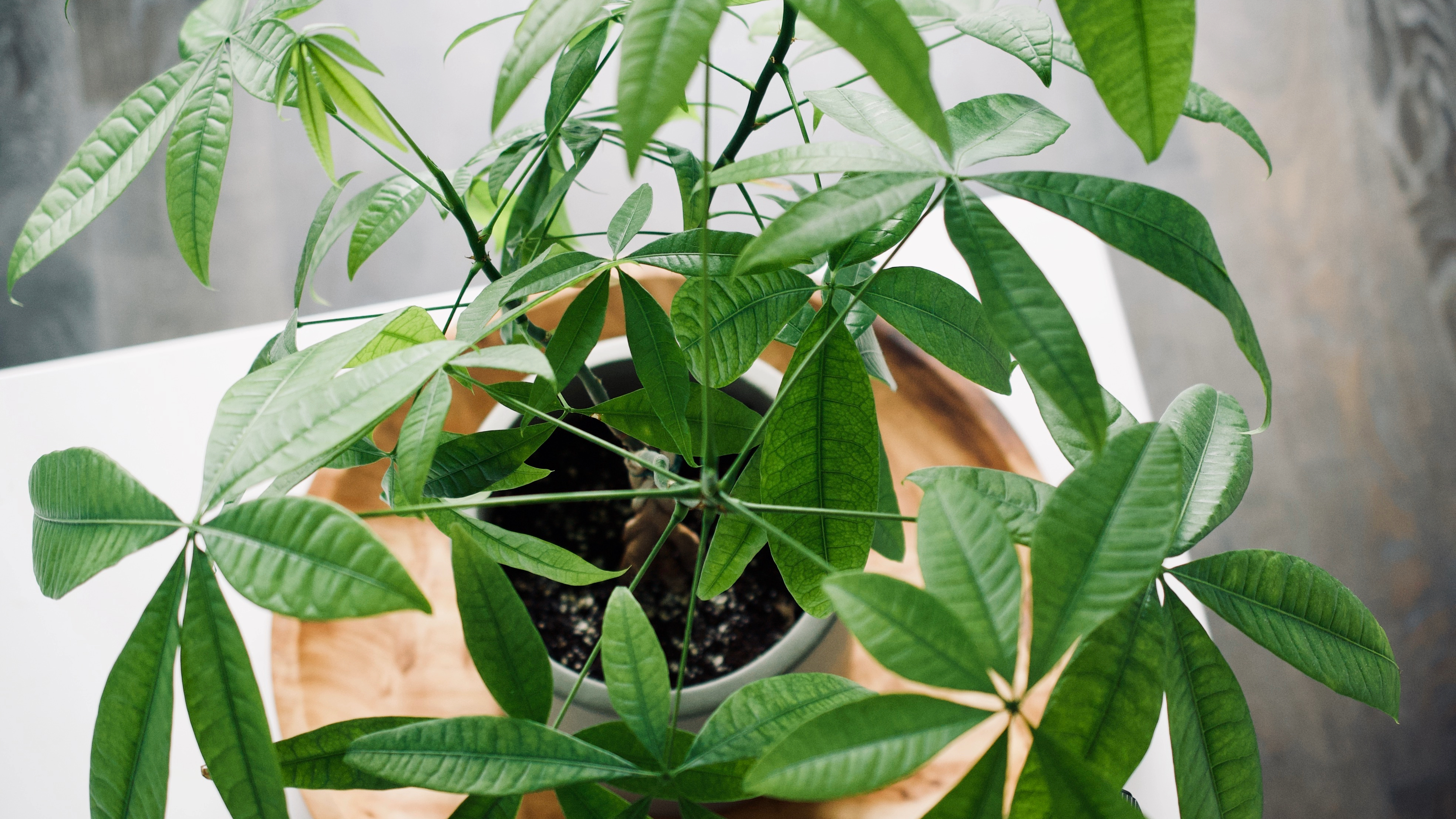
Does your feline friend like to scale plants like they would one of the best cat scratching posts or play with the leaves like they're an automated cat toy? If so, the money plant is the plant for you! It's almost indestructible and can grow to be a real statement piece, with most money trees reaching around six to eight feet in height. Incredibly hardy, they like bright, indirect sunlight and moist but well-drained soil.
19. Rattlesnake plant

While it has a name that might cause you to think twice about purchasing it, we promise this plant will not start spitting out live snakes! The rattlesnake plant is a tropical evergreen perennial that's native to Brazil and you'll probably want to be a more advanced gardener if you plan to take this one on. It has very particular light and moisture requirements, so it can be a bit fussy, but if you're prepared to nurture it, you'll love the eye-catching foliage display that it puts on.
20. Baby rubber plant
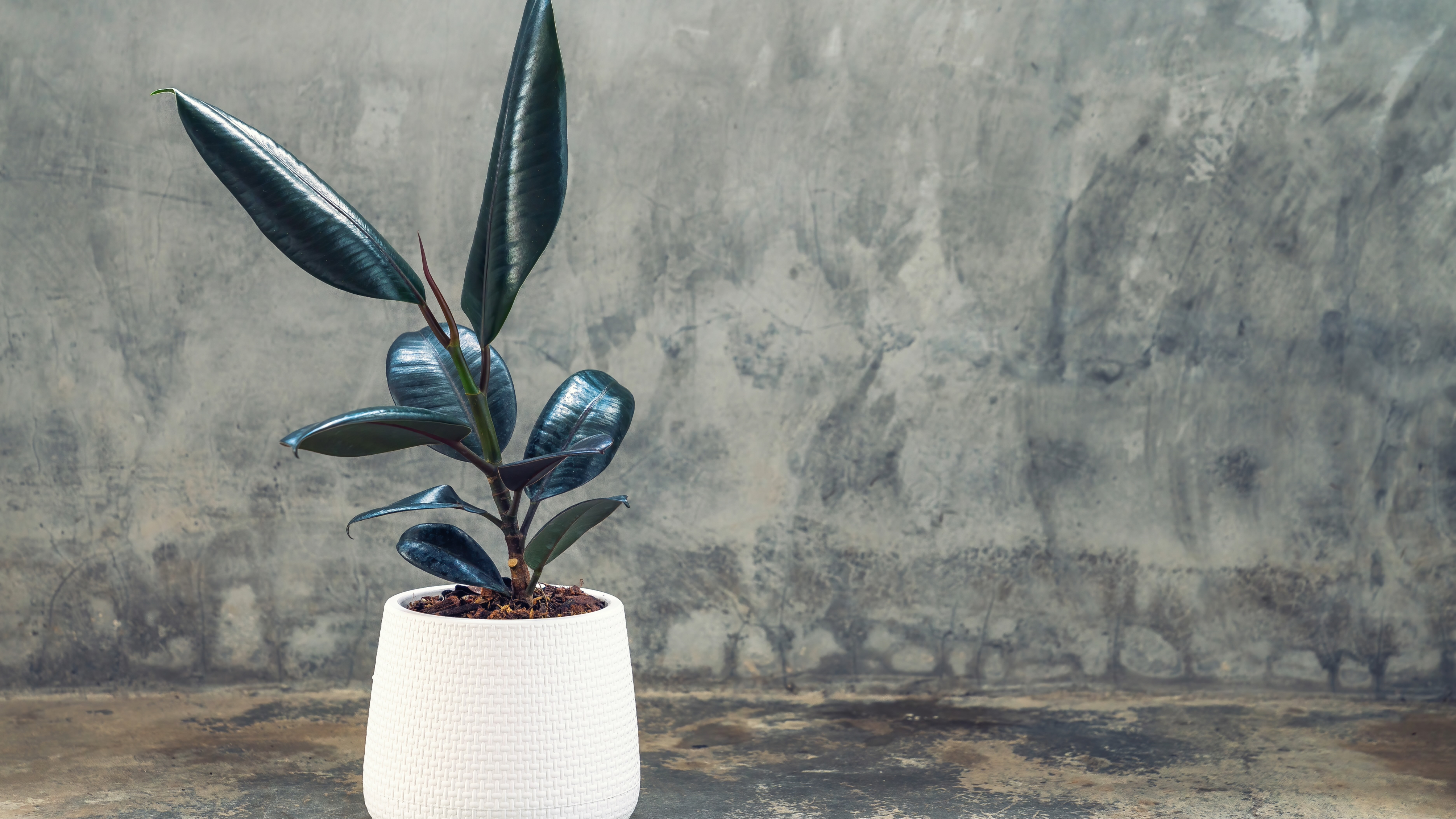
If you're looking for something compact, the baby rubber plant is a great option. Featuring thick and glossy water-filled leaves, this is a chic-looking plant that will look right at home in any living space. It does really well in low light, so if you don't have a super sunny house, rest assured that this plant will still thrive. Growing to just a foot in height, the baby rubber plant may be small but it still manages to look adorable. It's also completely non-toxic where pets and humans are concerned, so it's a lovely, safe choice to have in your home.
21. Watermelon peperomia
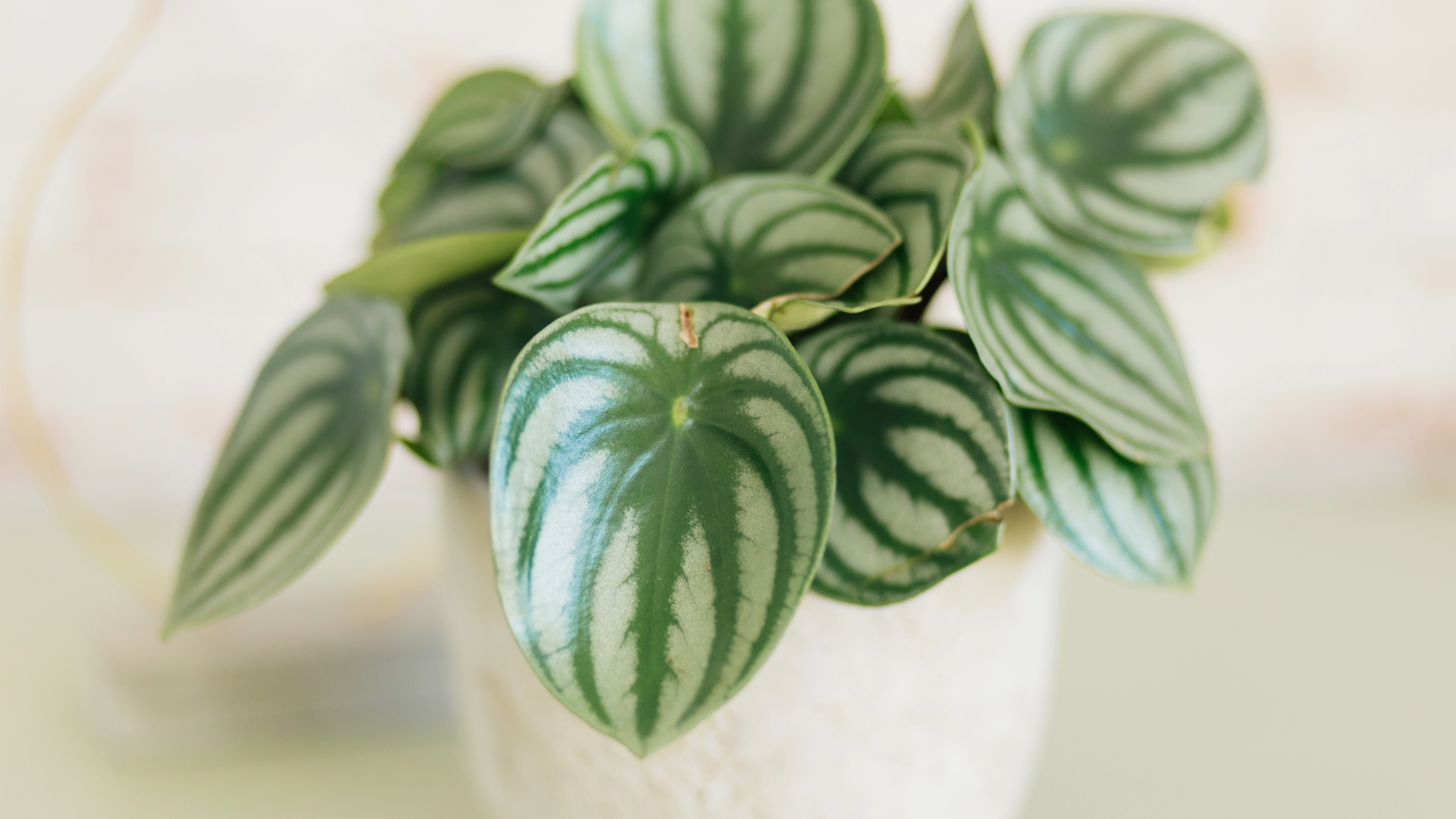
Named because its leaves look just like the pattern on a watermelon, this plant is native to South America and has a compact footprint. As well as its striking pattern, the leaves of the watermelon peperomia are attached to pink stems and shimmer when the light catches them making them a beautiful addition to any living space. Easy to care for, just make sure to water it regularly as this plant likes moisture – not too much though, just enough so the soil doesn't dry out and go hard.
22. Baby tears
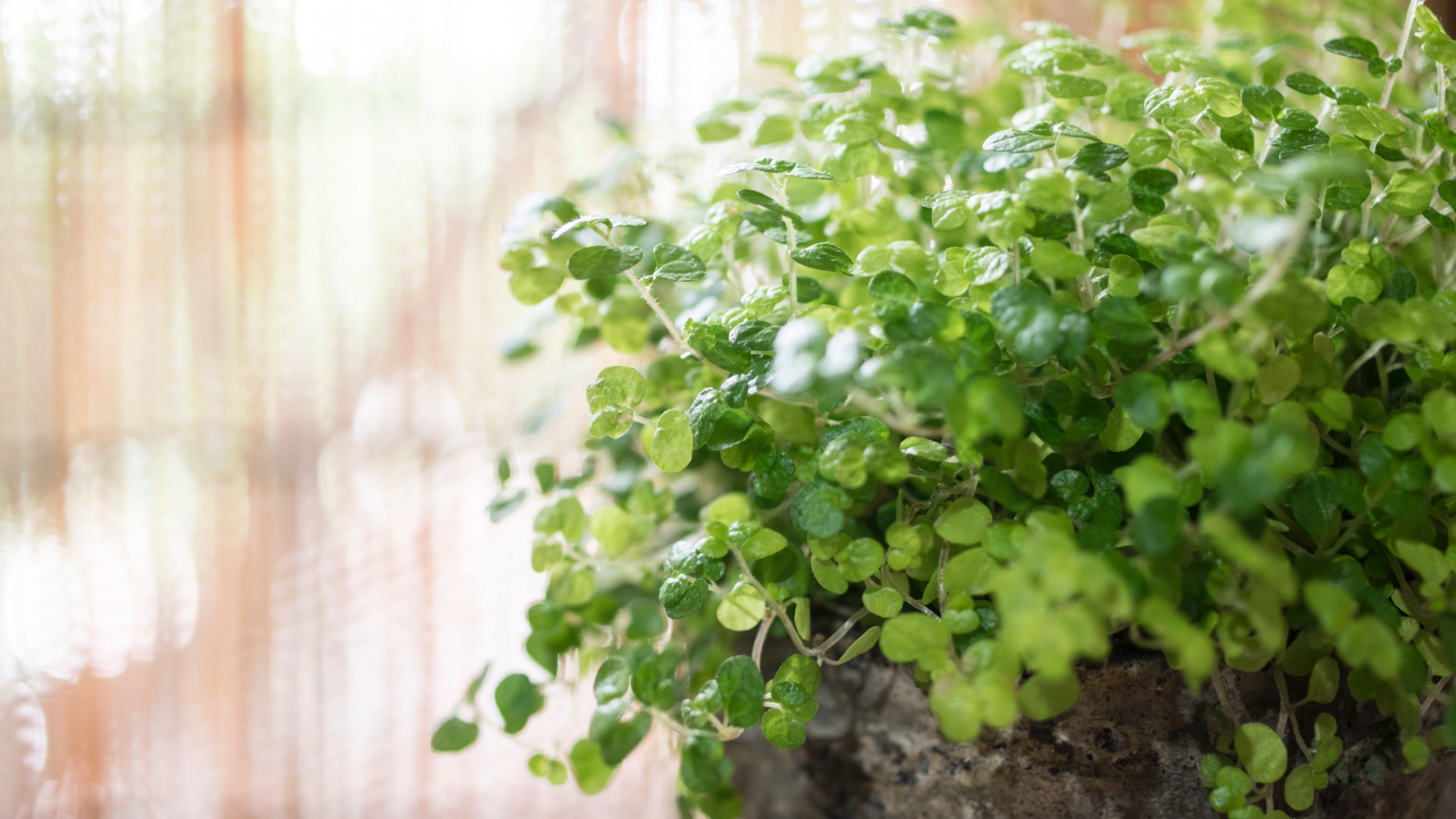
A sweet, attractive, and utterly low-maintenance plant, baby tears come from the nettle family and produce lots of tiny leaves. Managing to be both dense and delicate at the same time, it looks truly lovely in a hanging basket and while incredibly easy to grow, it does require regular attention in the form of watering to ensure it thrives and doesn't dry out.
23. Pineapple plant
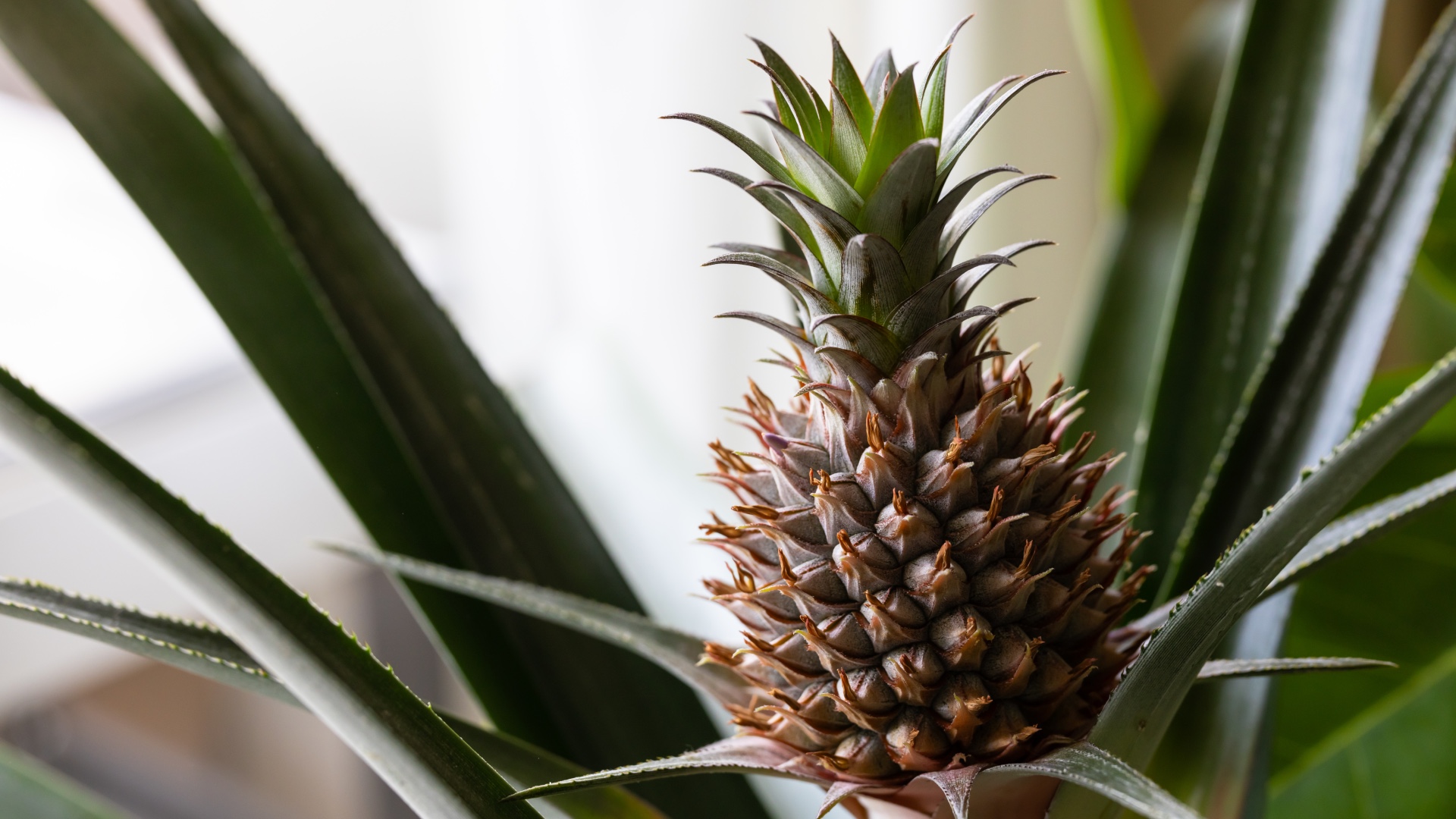
There are few plants in the world as unique as the pineapple plant! This complete limelight-stealer has a funky appearance thanks to its rosette of spiky leaves and of course, some very exotic-looking pineapples adorning the top. You can get two types of pineapple plants – one is large with edible fruit and one is smaller with fruit that is technically edible but very bitter.
The latter is the option you'll want to go for if you're going to be keeping it in the house. Pineapple plants love bright light but keep them out of direct sunlight as this will scorch their leaves.
24. String of hearts
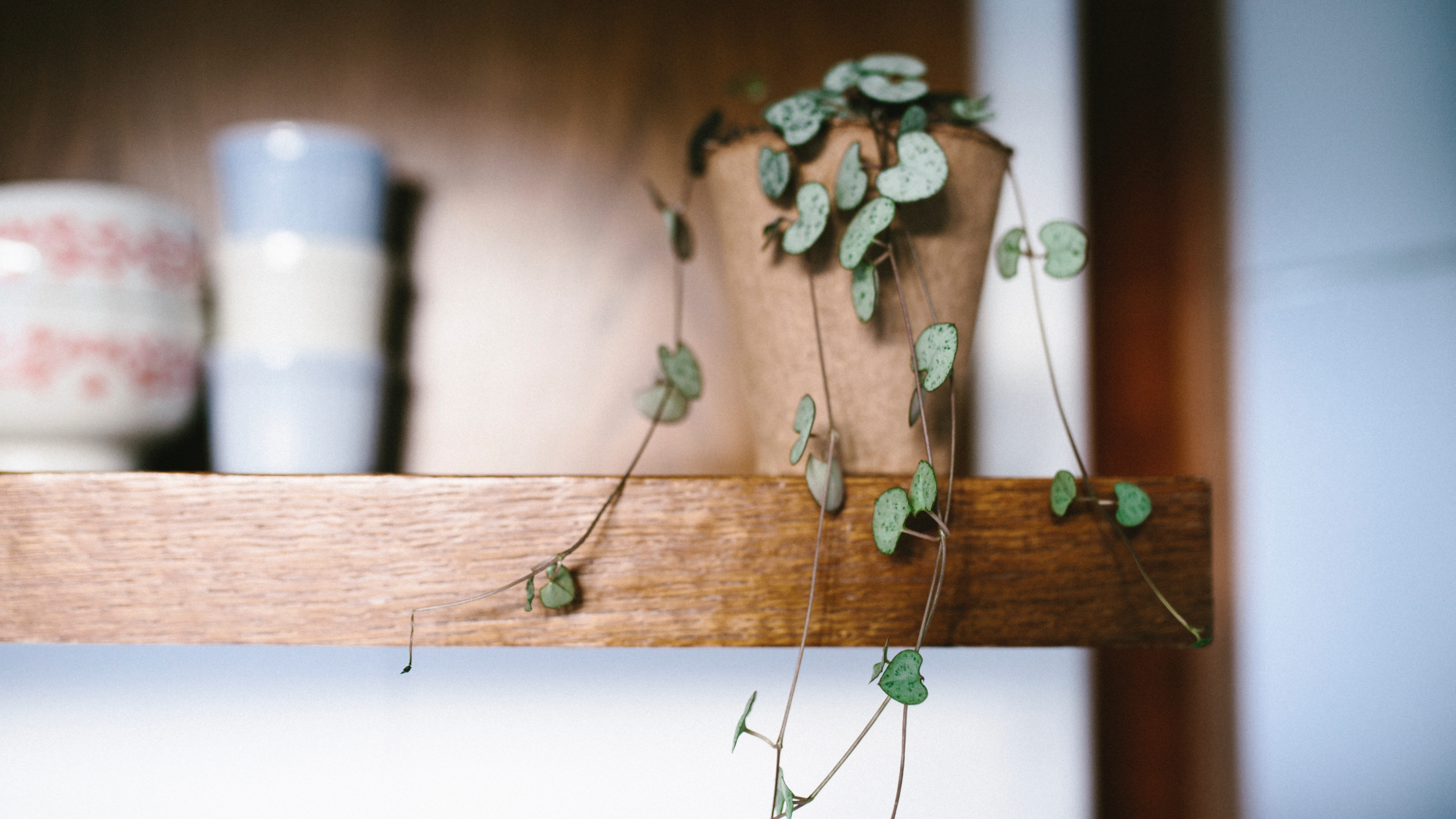
A super sweet plant with trailing vines that sport heart-shaped leaves, the string of hearts looks wonderful in a hanging basket or a pot. For the best growth, place it in an area of your home that receives dappled light and water regularly in the spring and summer, ensuring you allow the soil to fully dry out before adding more – this will prevent root rot, which this plant is susceptible to. While completely non-toxic to cats, the way this plant drapes can make it an appealing plaything, so you may want to place it in an area that's tricky for your kitty to access.
25. Christmas cactus
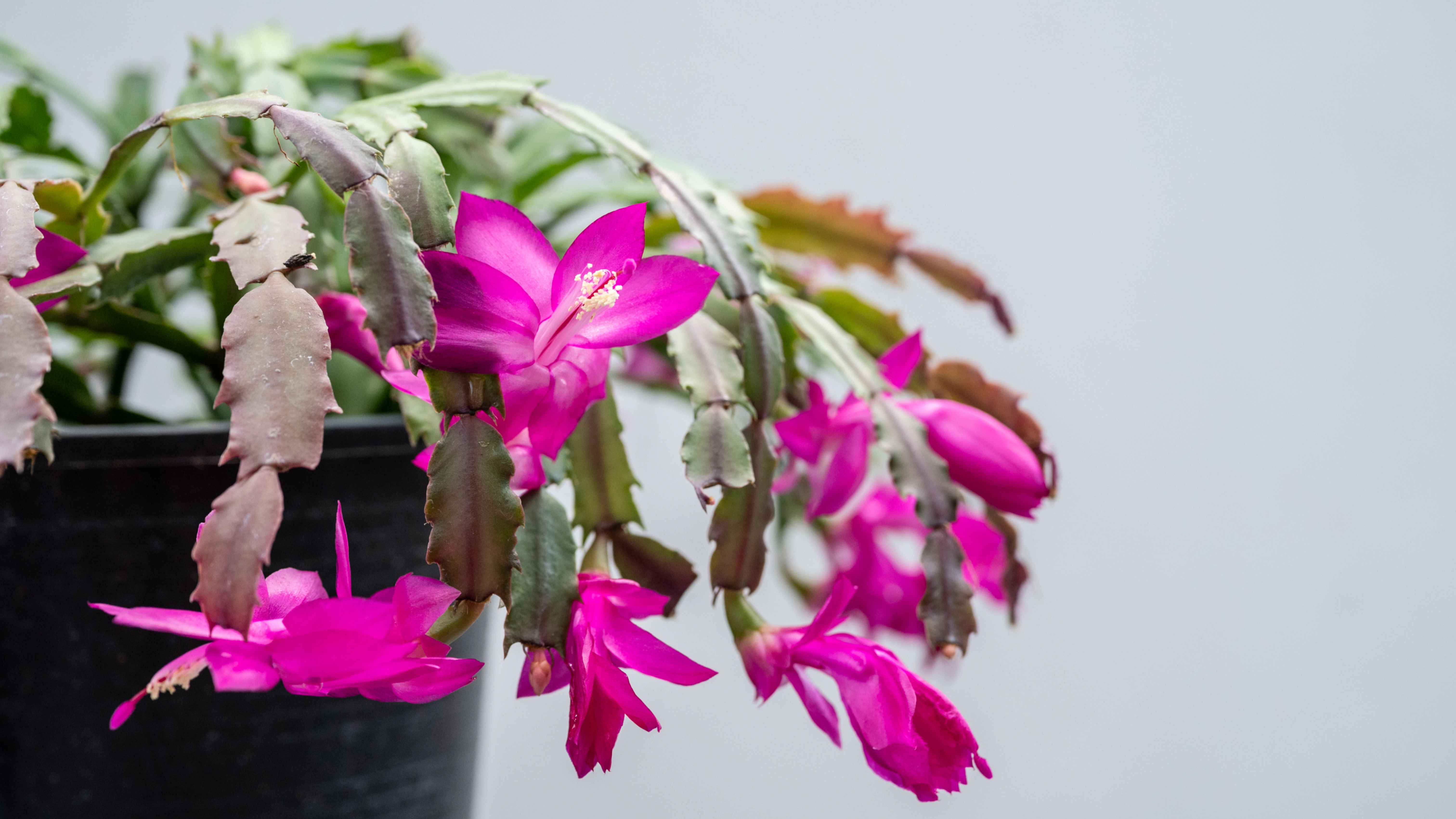
Looking to add a pop of color to your living space? The Christmas cactus will do the job nicely. A bright plant with petals that come in a variety of different shades from purple and pink to red and orange, this winter-flowering plant is easy to care for and has a long lifespan if cared for correctly – up to 20 years in fact! Just make sure you have it in a well-draining pot as the roots of the Christmas cactus don't like sitting in water.
26. Maidenhair fern
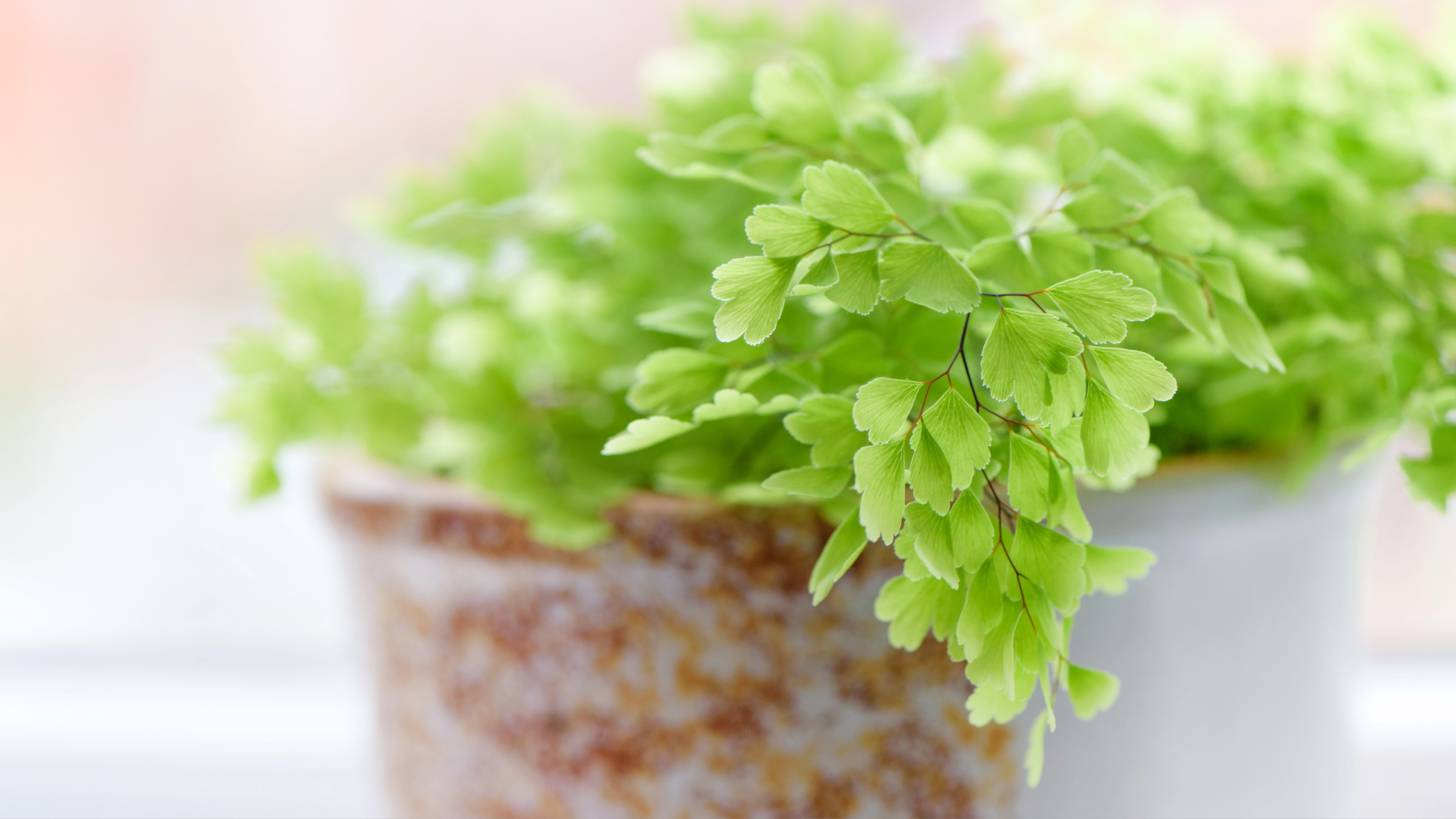
The pretty and delicate maidenhair fern has fan-shaped leaf segments that cluster together on wiry black stems and an elegant shape. This leafy house plant can be tricky to grow – the leaves will easily turn brown if the conditions aren't right – but as long as you keep it in a humid environment, like the bathroom, and ensure the soil stays moist, this plant will stay happy and healthy.
27. Zebra plant

With a leaf pattern that looks like the coat a zebra sports, this unique plant is a popular choice due to its striking appearance. Native to central and South America, the tropical zebra plant has delicate leaves so bright, indirect sunlight is best to prevent them from browning. They prefer humid conditions and well-draining soil.
28. Golden polypody
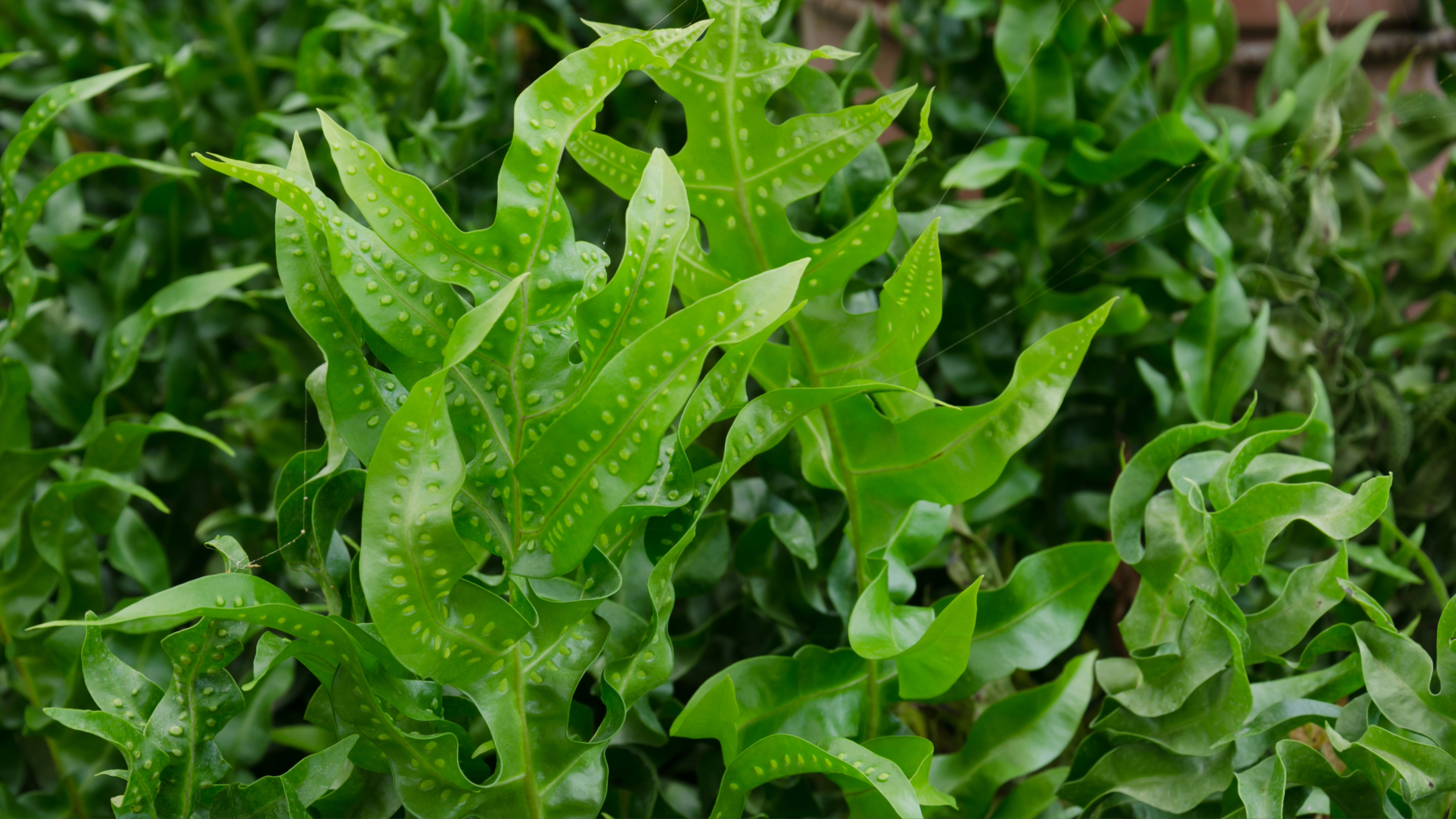
With its beautiful wavy blue-green fronds, the golden polypody is an evergreen houseplant that's native to North and South America and the Caribbean. It loves humid conditions, so a steamy bathroom is ideal, but if you'd rather place it elsewhere in your home, just make sure to mist it regularly.
29. Stromanthe triostar
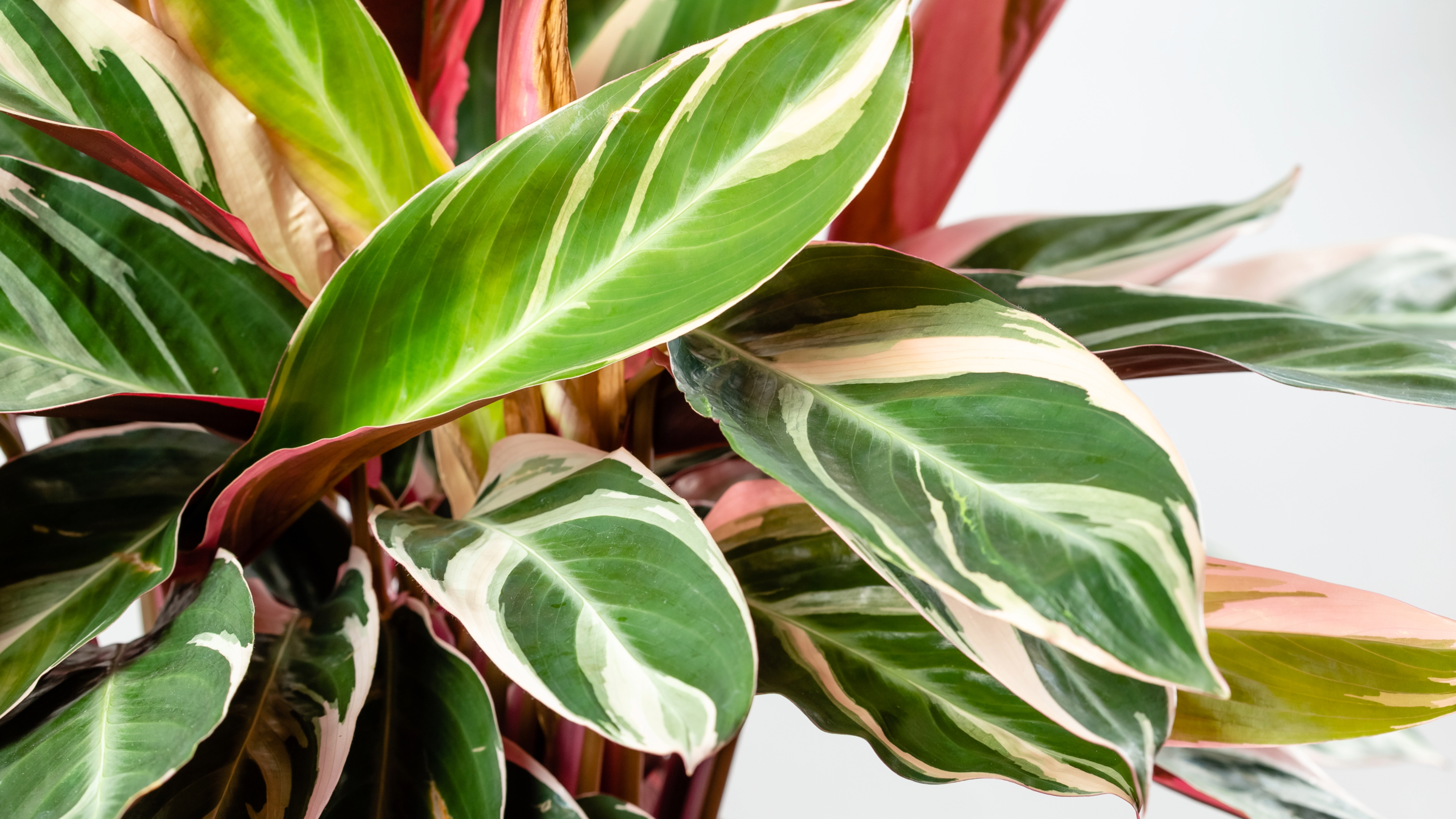
Growing to around two to three feet in height, the stromanthe triostar isn't the easiest plant in the world to care for but it will reward you with striking foliage if you get it right. A member of the prayer plant family, it has large, colorful leaves and grows best in warm, humid conditions. It can be a temperamental plant as it likes precise conditions, so just be mindful that it does require a lot of nurturing, including regular turning to ensure the leaves get an even distribution of light.
30. Mistletoe cactus
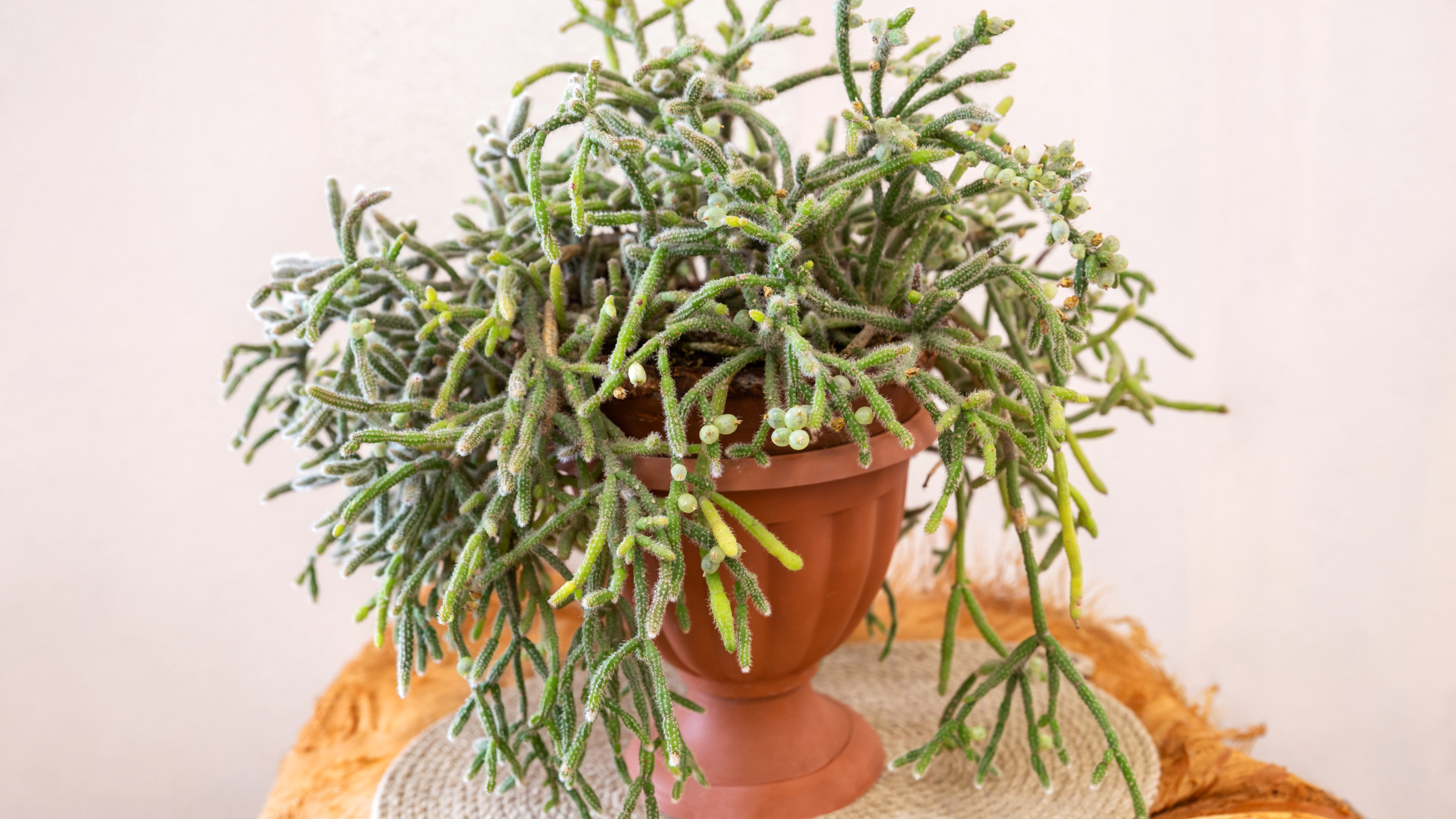
With funky pencil-like foliage, the mistletoe cactus is a wonderfully low-maintenance hanging house plant. Even though it is a cactus, it doesn't have any prickles, so if you have a curious kitty in your life, rest assured they won't get any prickles in their paws if they decide to investigate. Tiny, white flowers appear along the stems in winter and spring, which is likely how the mistletoe cactus got its name.
31. Cat palm
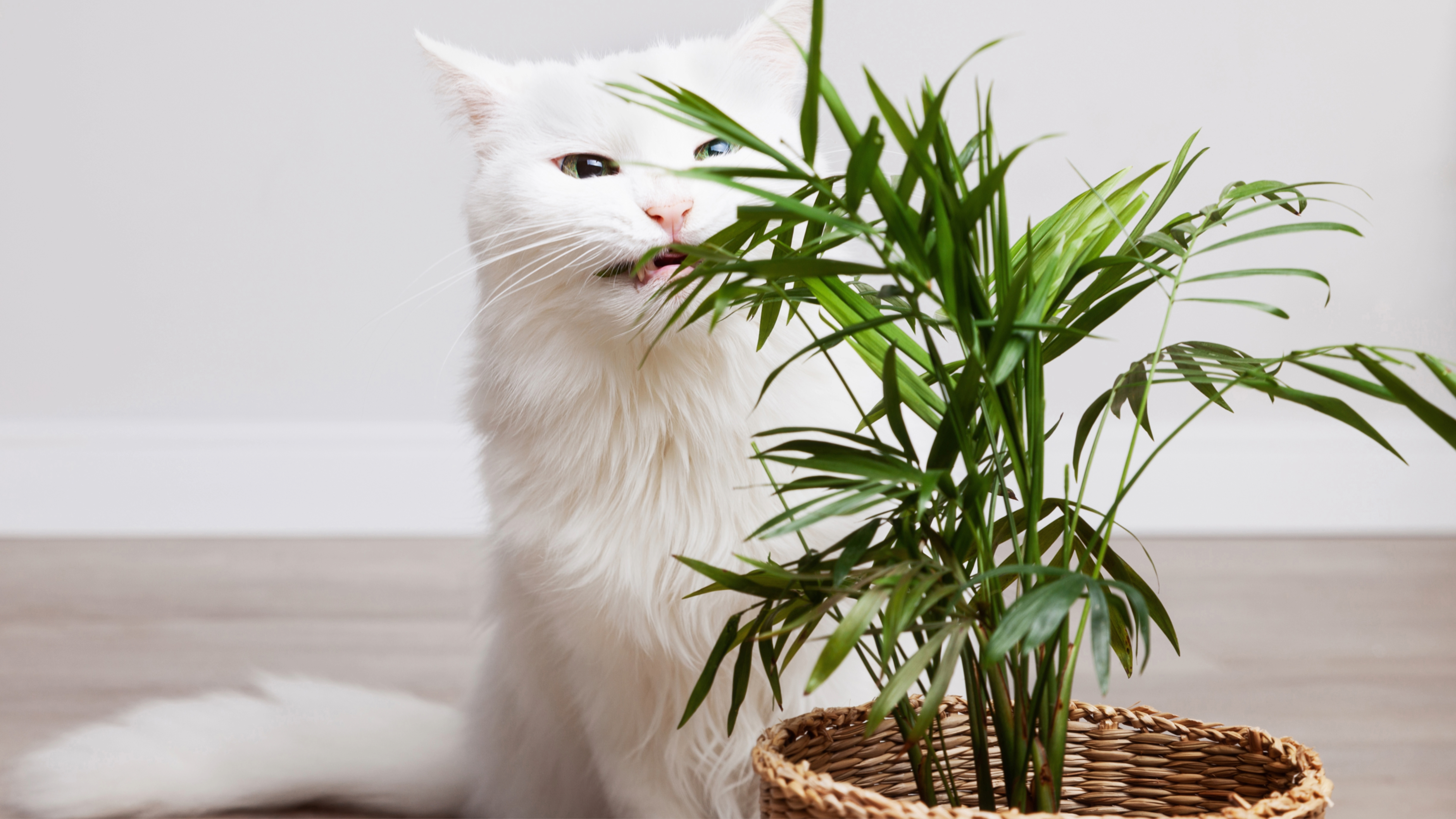
You know a plant is safe for your feline friend when it has the word 'cat' baked right on into the name! Growing up to 10 feet tall, the cat palm is known for its slender stems and elegant fronds which give it serious tropical vacation vibes. Bright, indirect light is best for this plant and you'll want to rotate the pot by a 1/4 turn every month to ensure even growth.
32. Kangaroo fern
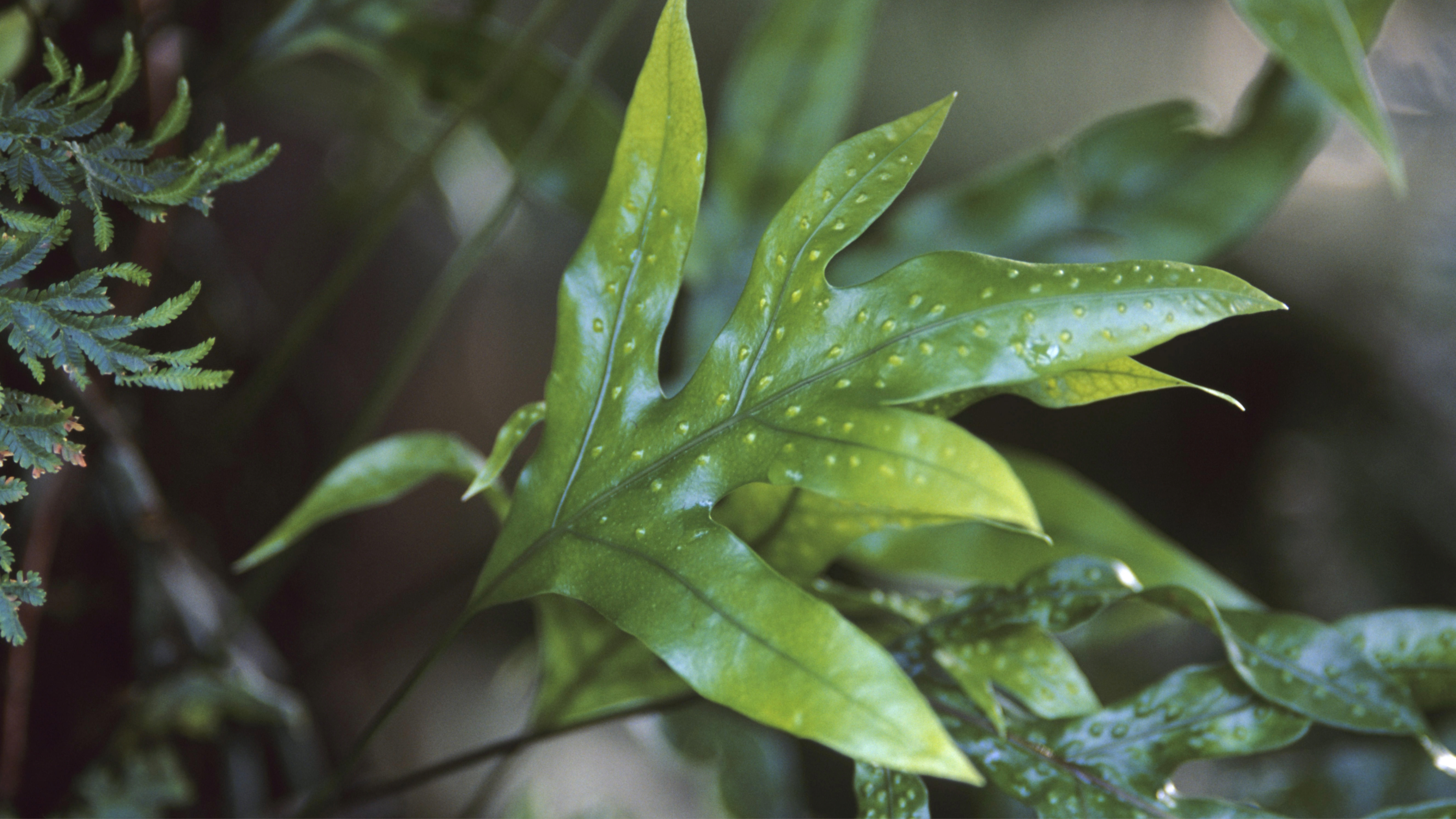
Native to Australia and New Zealand, the kangaroo fern grows to around 12 inches in height and has a spread of around four feet. It has a wild, untamed appearance that gives it a distinctive charm that's all part of its appeal. It likes humid conditions, acidic and moist soil, and regular feeding during the spring and summer months.
Got your cat-safe houseplants sorted? Here are all the other ways to cat-proof your home!

Kathryn is a freelance writer who has been a member of the PetsRadar family since it launched in 2020. Highly experienced in her field, she's driven by a desire to provide pet parents with accurate, timely, and informative content that enables them to provide their fur friends with everything they need to thrive. Kathryn works closely with vets and trainers to ensure all articles offer the most up-to-date information across a range of pet-related fields, from insights into health and behavior issues to tips on products and training. When she’s not busy crafting the perfect sentence for her features, buying guides and news pieces, she can be found hanging out with her family (which includes one super sassy cat), drinking copious amounts of Jasmine tea and reading all the books.
